





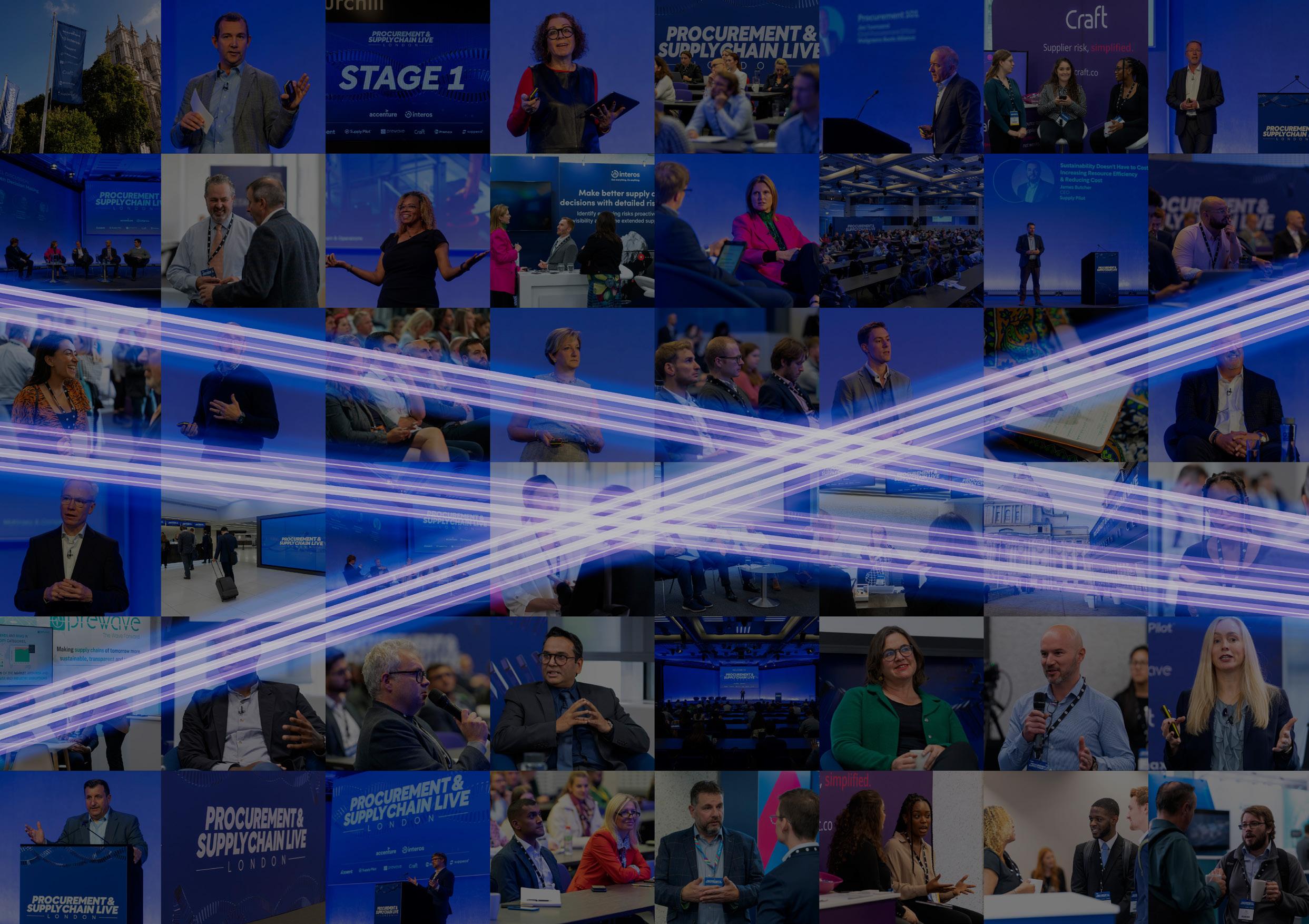
26 - 27 September 2023
Business Design Centre, London
SPONSORSHIPS GET YOUR PASS






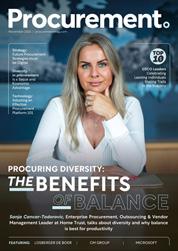
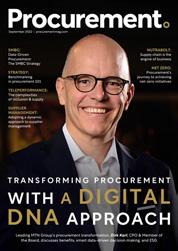

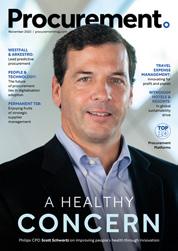
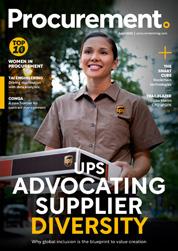
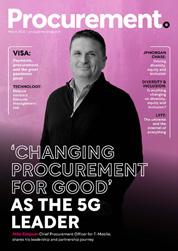

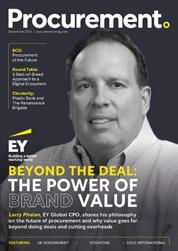

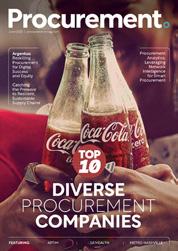

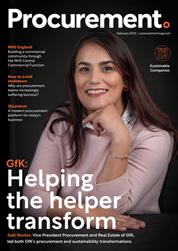
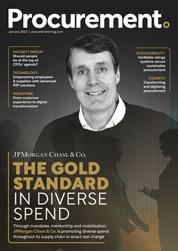


































Procurement magazine is an established and trusted voice with an engaged and highly targeted audience of 70,000 global executives
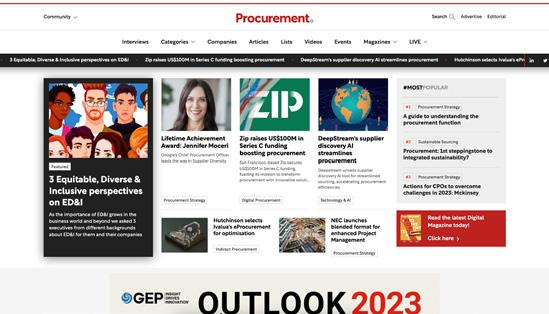






Digital Magazine

Website Newsletters
Industry Data & Demand Generation
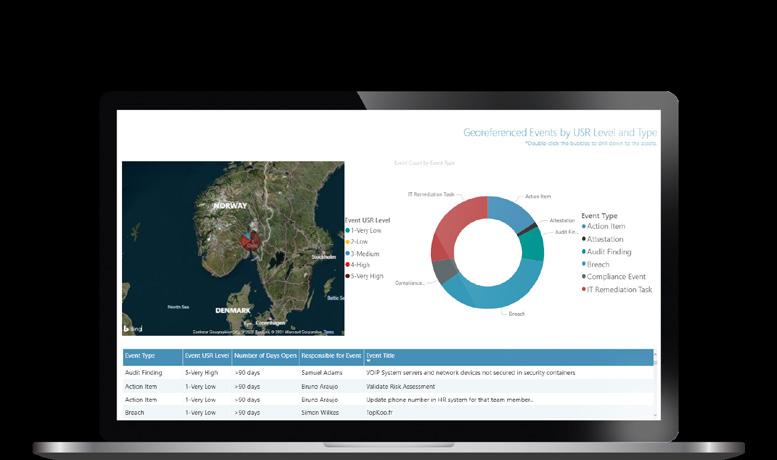
Webinars: Creation & Promotion
White Papers & Research Reports
Lists: Top 10s & Top 100s
Events: Virtual & In-Person



WORK WITH US

CHIEF CONTENT OFFICER
SCOTT BIRCH
MANAGING EDITOR
NEIL PERRY
CHIEF DESIGN OFFICER
MATT JOHNSON
HEAD OF DESIGN
ANDY WOOLLACOTT
LEAD DESIGNER
JULIA WAINWRIGHT

FEATURE DESIGNERS
MIMI GUNN
SOPHIE-ANN PINNELL
HECTOR PENROSE
SAM HUBBARD
REBEKAH BIRLESON
ADVERT DESIGNERS
JORDAN WOOD
DANILO CARDOSO
CALLUM HOOD
VIDEO PRODUCTION
MANAGER
KIERAN WAITE
SENIOR VIDEOGRAPHER
HUDSON MELDRUM
DIGITAL VIDEO PRODUCERS
ERNEST DE NEVE
THOMAS EASTERFORD
DREW HARDMAN

SALLY MOUSTAFA
PRODUCTION DIRECTORS
GEORGIA ALLEN
DANIELA KIANICKOVÁ
PRODUCTION MANAGERS
JANE ARNETA
MARIA GONZALEZ
YEVHENIIA SUBBOTINA
MARKETING MANAGER
KATHRYN WEBB
PROJECT DIRECTOR
STUART IRVING
JAMES BERRY
MEDIA SALES DIRECTOR
LEWIS HAMMOND
MANAGING DIRECTOR
LEWIS VAUGHAN
CEO
GLEN WHITE

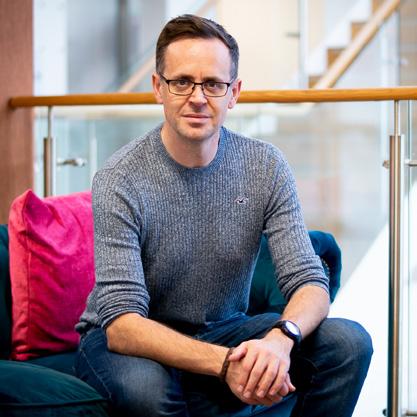
It is by sharing knowledge and experience that procurement professionals learn and grow

While hosting our ‘Procurement and Supply Chain LIVE’ event this summer it was fascinating to see how the insight and knowledge of experienced professionals enriches all areas of procurement and supply chain.
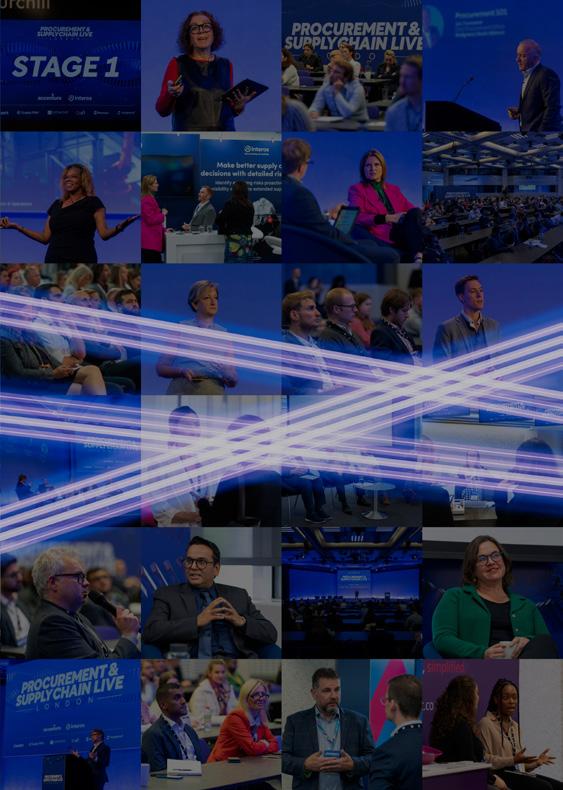
In our panel discussions and forums, execs with decades of experience shared their knowledge and in so doing they are helping to set strategic agendas in the wider industry.
We bring that same spirit of shared practice in this issue, by offering category management optimisation strategies, and by discussing risks in regulatory compliance.
In the field of sustainable procurement, meanwhile, we explore how to achieve transparency, and thus find efficiencies with vendor portals.
Professional progression is the key to job satisfaction, so who better to learn from than one another?
neil.perry@bizclikmedia.com
“Professional progression is the key to job satisfaction, so who better to learn from than one another?”
014 BIG PICTURE Boeing procurement forecast as air travel recovers from pandemic


016 INTERVIEW WITH...
Lior Delgo, Co-Founder and President at Globality
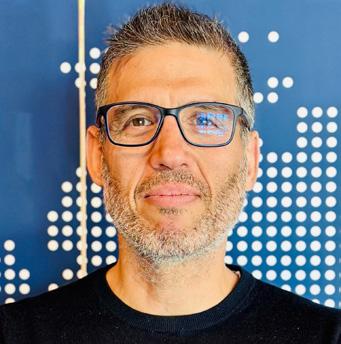
020 LIFETIME OF ACHIEVEMENT
Jim Townsend, former CPO at Walgreens Boots Alliance, on next career steps for Chief Procurement Officers
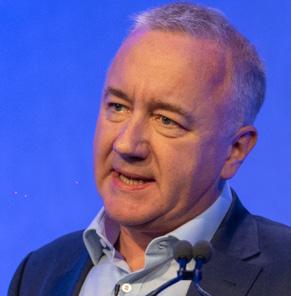




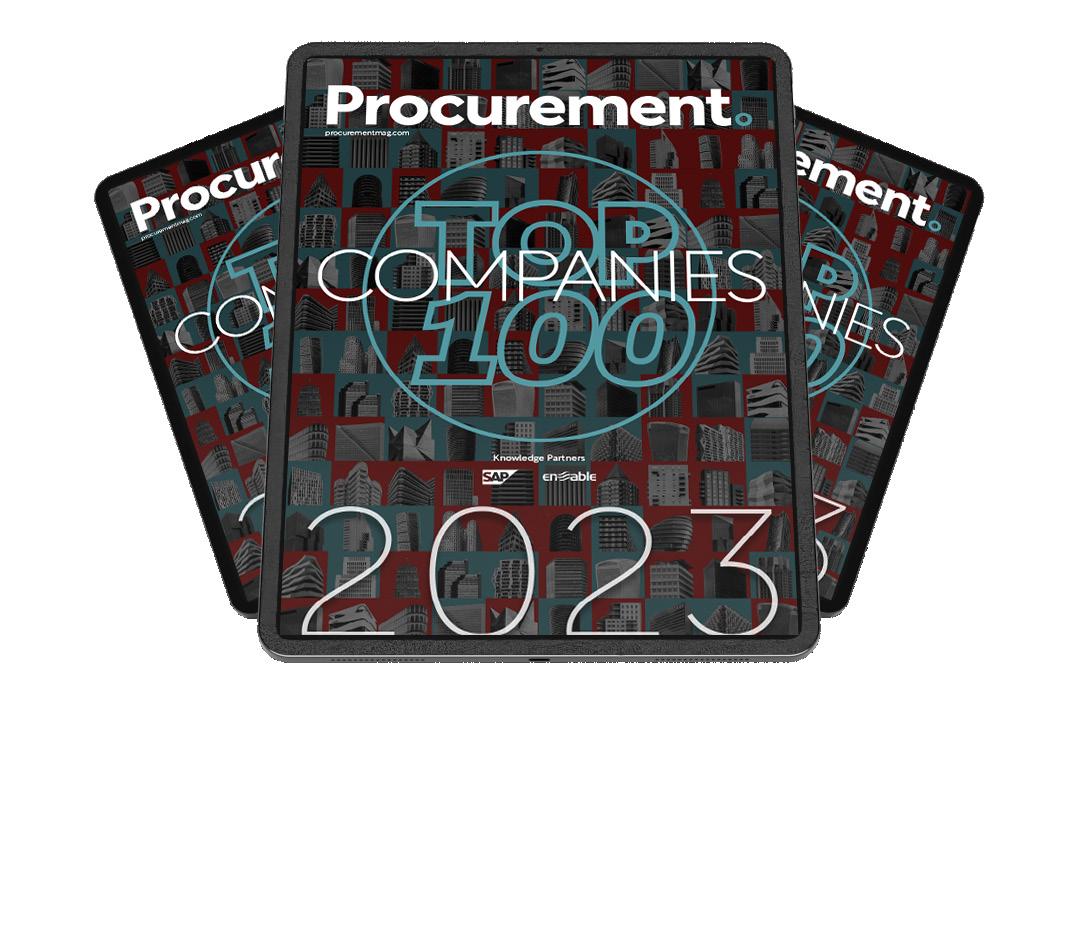





READ NOW







Investing in energy efficiency has significant business benefits for industry, explains Joris
for IEC
Cocquyt, Head of Sales Low Voltage Motors, ABB.
Energy efficiency – achieving the same outcome using less electricity – is broadly understood as an essential contributor to reaching Net Zero. The International Energy Agency (IEA) describes it as “the first fuel – the fuel you do not have to use.”
In a recent survey by ABB, which included over 2000 businesses, cost (50 percent) was listed as the biggest barrier to improving energy efficiency. What these businesses may not yet realise is that efficiency can also save them money as well as contribute to net zero.
The good news is that energy-efficient technology is available today that simultaneously maximises return on investment (ROI) and minimises emissions. Here is what businesses need to know.
Electricity is typically an industrial facility’s greatest single operating expenditure (OpEx). Electric motors, in turn, are generally the most energy-intensive components within a
Joris Cocquyt Head of Sales for IEC Low Voltage Motors
ABB
facility. Around the world, approximately 300 million motors currently power pumps, fans, mixers, and conveyors, among many other types of machinery. Therefore, any opportunity to reduce their operating costs thanks to more energy-efficient technology will have a significant impact on the bottom line.
The most efficient motors available today are synchronous reluctance motors (SynRM) These motors are capable of achieving IE5 efficiency, meaning that they have energy losses 50 percent lower than those of an IE2 motor and 40 percent lower than those of an IE3 motor.
ABB IE5 SynRM and DriveA less efficient motor is cheaper in terms of capital expenditure (CapEx), but more expensive in terms of OpEx. Looking at the total cost of ownership (TCO) makes this clear: approximately 97 percent of a SynRM motor’s TCO results from the electricity used to power it. Around 1 percent goes to maintenance, and the motor’s CapEx is just 2 per cent. Therefore, spending a small amount upfront on a more efficient motor makes sense.

the facility’s pool filtration and water circulation system, HVAC central plant, and greywater systems, the council decided to “future-proof” its equipment by investing in highly efficient technology. This included state-of-the-art SynRM motor-drive packages.
The new motor systems have resulted in savings of USD 23,900 per year, which will quickly pay for the cost of the new equipment and continually deliver ROI going forward. The changes also eliminate the equivalent of 77 tons of carbon emissions every year.
It may not always be viable to replace a facility’s electric motors with new highefficiency models. In these cases, operators can improve their efficiency using variable speed drives (VSDs). A VSD ensures that a motor only runs as fast as it needs to, resulting in significant savings. This has the most significant impact when used with motors running pumps, fans and compressors, where a VSD typically reduces power consumption by around 25 per cent. Modern motors are also compatible with VSDs, and SynRM motors use them as standard.
Rapid advances in technology mean that even motors installed as recently as five to ten years ago may be worth replacing in advance of their end of life. Continuing to use less efficient motors often means that a business is losing money in the long term. More efficient motors are designed as drop-in solutions, minimising the cost of installing them and eliminating the need to modify existing machinery in most cases.
Since electricity is such a significant proportion of a motor’s TCO, efficiency also affects return on investment (ROI).
For example, the Doone Kennedy Hobart Aquatic Centre in Tasmania, Australia, is a pool complex that was struggling with operating costs. After a careful review of
Energy efficiency is a genuine win-win: it is better for a business’s bottom line and it is an essential step toward Net Zero. Many businesses have already pledged to invest in energy efficiency, including by joining efforts like the Energy Efficiency Movement. As industry begins to embrace energy efficiency, we can look forward to a more financially successful, sustainable world.

Boeing is forecasting demand for 42,600 new commercial aircraft by 2042. The 2023 Commercial Market Outlook (CMO) is the company forecast for procurement of their aircraft and services.
Boeing is projecting global demand for 42,595 new commercial jets by
2042, valued at a total of $8 trillion. Boeing has published the CMO annually since 1961 and as the longest running report of its kind, it is regarded as a key piece of analysis of procurement and commercial trends in the aviation industry.

» At Globality we automate the world’s sourcing by making it easy, autonomous, and intelligent.
My role is to bring together the best team in the world, and work relentlessly to ensure that our vision becomes a reality. My ultimate aim is to grow Globality into one of the largest technology companies in the world.
» I am a serial entrepreneur, and Globality is my third and most ambitious startup.
My first company, Farechase, was acquired by Yahoo, and my second venture, Videosurf, was acquired by Microsoft.
Throughout my professional life, I have been driven by a passion for building transformative technologies with exceptional teams and investors who share a similar passion.
We have invested years in training models to ensureour AI can deliver substantial value to enterprises when sourcing billions of dollars through our product.
We have pushed the boundaries of science to reach where we are today.
“Chat interfaces will soon become self-service thanks to AI”
The Co-Founder and President at Globality discusses the exciting future of AI in procurement technology
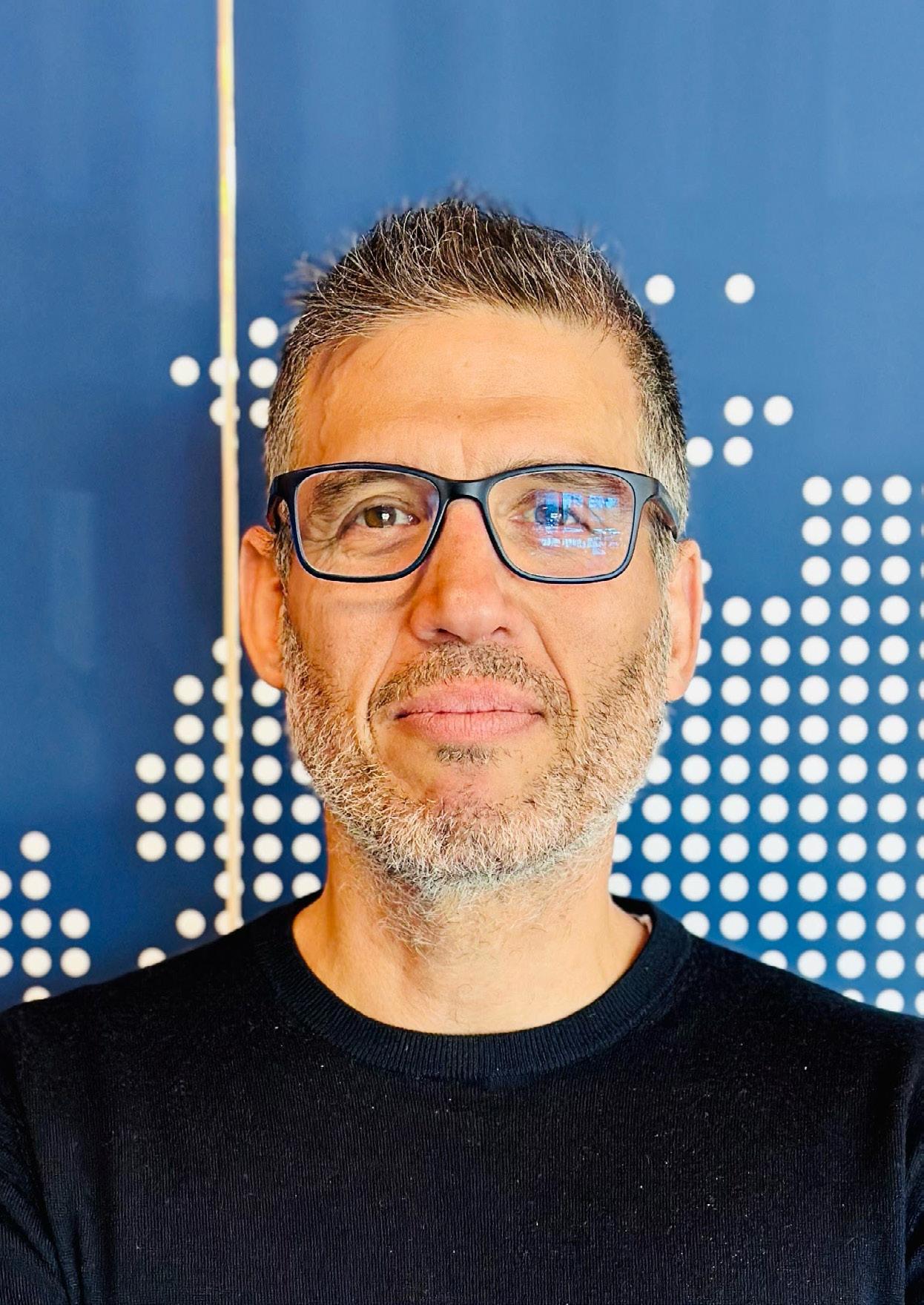
Trade is a driving force that empowers the world. The wide array of purchases we enable on our platform have a significant impact on the world at large.
» Generative AI is a game changer for every industry, particularly for indirect procurement, where its impact is unique.
First, a sourcing event inherently involves language-based elements such as descriptions, contextual information, objectives, and requirements.
To automate sourcing and facilitate seamless trade, it becomes crucial to enable machines to comprehend users’ purchasing needs and identify the skills and capabilities required for sourcing event requests.
Without a deep understanding of natural language and how it aligns with suppliers’ offerings, automated sourcing would not be possible.
Additionally, an interactive dialogue chatbot with advanced intelligence is necessary to guide users and provide domain-specific expertise for traded goods and services. The chatbot must possess human-like capabilities and deep intelligence to conduct interviews with users, guide them throughout the journey, and address any questions they may have.
» The exciting developments will come from two factors:
• Unique data that can be used in conjunction with AI advancements
• Intuitive user experiences using a chat interface to transform enterprise workflows, making them self-service
This year feels like a tipping point for this exciting journey. Innovation is nonlinear, and the pace of adoption we are currently witnessing is exponential.
» We are committed to delivering more personalised, insightful, and automated experiences throughout the user journey. The biggest anticipated change will be the
Globality was founded in 2015
with the mission to make globalisation work for more businesses and people around the world
widespread awareness and acceptance of AI technology as a real and impactful force in our lives.
This milestone is generating excitement and demand for AI-powered solutions, particularly in enterprise automation, driven by the need for cost reduction due to macroeconomic factors. I believe we have only scratched the surface of what is possible, making the most exciting developments lie beyond our imagination.

“We have only scratched the surface of what is possible in AI”
Jim Townsend has been CPO at one of the biggest companies in the world, and has three decades of experience at the highest levels of the procurement world. His CV includes positions at Rolls-Royce, GE, Anglo American and most recently at Walgreens Boots Alliance where he was Chief Procurement Officer until July 2022 when he decided to step back and consider the next phase of his life.
Speaking to Procurement Magazine from his kitchen, Jim is relaxed but enthusiastic about the potential for a rewarding Indian Summer for his career and that of many other seasoned procurement industry professionals who have a diverse range of skills to offer. His question after a lifetime of achievement, is that if you have been a CPO at one of the world’s largest companies, what comes next?
“I pretty well achieved everything that I’d wanted to in my previous role. I’ve had a very fulfilling career so far, I’ve worked for four great blue chip
companies and delivered billions of dollars in terms of the benefits over the years and we’ve made some amazing transformations,” he says.
His sabbatical has given him the opportunity to consider the myriad of options available to experienced CPOs and making the right choice of what to invest their time in next.
“I’m probably going to work for another five or ten years and I need to make sure that I choose very carefully a role that is truly fulfilling. It needs to bring me some new experiences and give me something new to learn and adapt to. I don’t want a ‘rinse and repeat’ of what I’ve done before, quite frankly, because that’s a really easy thing to do.”
Having worked in all corners of the globe and guided transformative changes in procurement functions at householdname organisations, Jim is aware just how many strands of a business a CPO will have experience of.
“As a CPO, you typically interface with all of the areas within a business, and you have a pretty good understanding of how

“I don’t want a ‘rinse and repeat’ of what I’ve done before, quite frankly, because that’s a really easy thing to do”Jim Townsend speaking at Procurement and Supply Chain LIVE London 2022
the business works,” he says. “One of the challenges can be you are not always as close to the products and the services offered, but what you lose in that, you gain elsewhere in terms of understanding how it all fits together.”
This is where the ‘what next’ question comes into play, as there are so many considerations for an executive in that phase of their career, such as what you find rewarding, what you still want to achieve, how long you plan to work for, and your own personal circumstances.
He considers the options that are available, like becoming a CPO in a dramatically different area, a move into the public sector, branching out into a COO role, advisory and consulting, non-exec directing, or building up a wide ranging portfolio of activities.
“Another one I would say people should consider is advising and supporting procurement technology companies, and helping them navigate the procurement world. To bring leadership context and connectivity to that kind of growing company or alternately working with some advisory firms, either providing advice or working as a senior consultant, bringing forward all the great experience you have.”
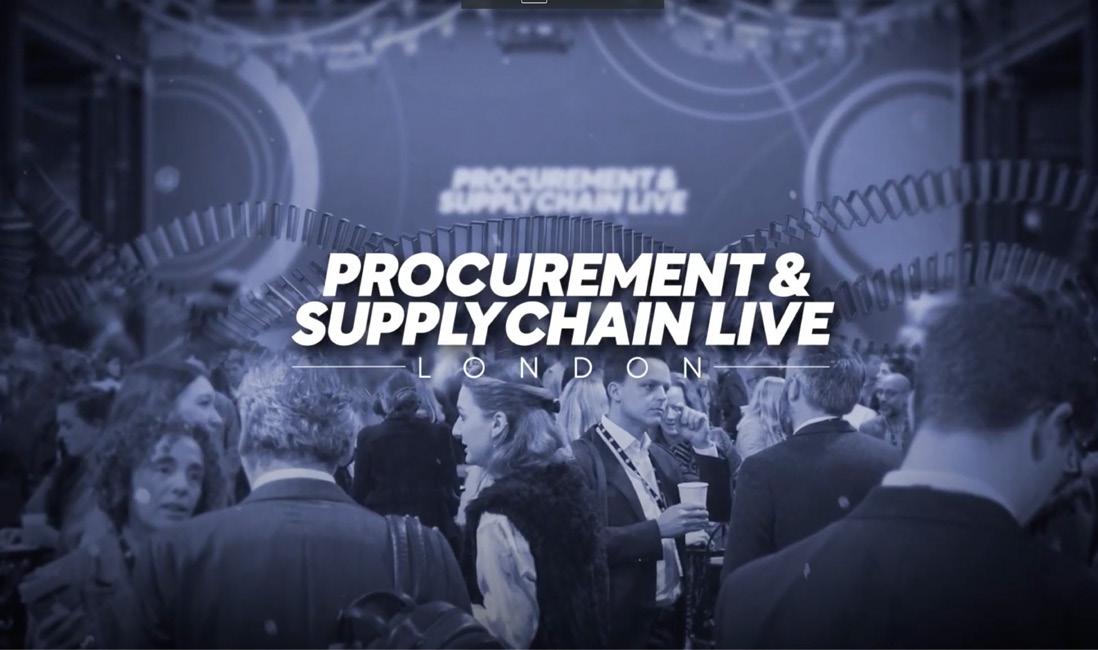
It is this experience he argues that can open many other doors, like considering interim CPO placements that will bring with it diverse challenges and keep you fresh in new industries.
It is these new challenges that keep Jim motivated as he considers the next phase of his career, and he knows it is the underlying ambition that will drive many
other senior procurement managers as they reach a later phase of their career.
“Being a CPO is very much influence led and this sets them up well for a broad range of senior leadership teams, be it as a Chief Operating Officer or Transformation Director, I think that it’s really important you reflect on that and don’t pigeonhole yourself as just a procurement person. Look at yourself as a transformation person.”

As Jim reflects on his next step he is grateful for having the opportunity
to take a brief sabbatical to make the best decision for himself and his family and is reflecting on the opportunity as an overwhelmingly positive experience.
“Be really honest with yourself about what your motivations are and ask yourself what you really want to do. I think we each have to put aside our C-suite ego, and all of the accoutrements that go with that, and consider in a few years time you want to be able to say you really enjoyed that.”
“Look at yourself as a transformation person”
Streamline purchasing while saving on everyday supplies so you can focus on growing your business.

Enjoy great discounts, starting from just two units, on over 4 million products from the most trusted brands.
Get unlimited, FREE delivery on eligible orders for everyone on your business account, plus more benefits.

Connect your teams, create purchasing groups and share payment methods.
Create
With so many procurement companies pushing for market share, Procurement Magazine picks ten of the very best
WRITTEN BY: NEIL PERRYAs AI technology continues to invigorate and disrupt the industry, there are dozens of companies leading the way in the field of procurement technology.

From long established multinational giants, to exciting start-ups full of fresh thinking, it is a fascinating time to be part of the sector.
Here are our top 10 procurement companies.



Founded in 1989, Accenture is a global professional service company headquartered in Ireland. With leading expertise in digital, cloud and security, Accenture combines unmatched experience and specialised skills across more than 40 industries including procurement. Helping clients to become the next and best versions of themselves, Accenture is dedicated to delivering on the promise of technology and human ingenuity. By embracing the power of change Accenture is able to create value and shared success for its clients, people, shareholders, partners, and communities. accenture.com

Helping millions of customers worldwide, Amazon Business works with small businesses, schools, hospitals, nonprofits, governments, and large enterprises to reshape their procurement. Amazon Business helps its customers to generate cost and time savings, increase productivity, and drive insightful purchasing analytics. Customers of Amazon Business benefit from convenient shipping options on millions of supplies across categories like office, IT, janitorial, food service, and professional medical supplies, as well as have access to a variety of businesstailored features and benefits. business.amazon.com
Founded in 1998, Zycus is a pioneer in cognitive procurement software. A trusted partner for large global enterprises for two decades, Zycus is continuously recognised by Gartner, Forrester and other analysts for its Source-to-Pay (S2P) integrated suite. Helping its customers to do more with less with its cognitive S2P solutions, Zycus powers its solutions with the revolutionary Merlin AI Suite and prides itself on being the only organically built and seamlessly integrated solution. zycus.com
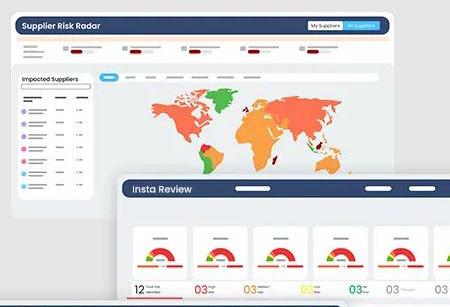


Headquartered in Paris, Ivalua is a French cloud-based spend management software provider that believes in the digital transformation revolution for supply chain sustainability and resiliency to unlock the power of collaboration. For almost 25 years, the company has been offering those in procurement and supply chain management a unified platform to empower effective management of spend and suppliers. Ivalua’s holistic cloud platform helps businesses to increase profitability, improve ESG performance, lower risk, and improve employee productivity. g ivalua.com


Founded in 1977, Oracle is a cloud technology company providing organisations around the world with computing infrastructure and software. Through its technology, Oracle drives innovation, unlocks efficiencies and helps organisations become more effective. “Our mission is to help people see data in new ways, discover insights, unlock endless possibilities.” Providing high performance, security, and cost savings, Oracle has designed its solutions to make the management of workloads easy for businesses when it comes to on-premise and cloud solutions. oracle.com




Founded in 1911, IBM is an international IT services and consulting company. When it comes to procurement, IBM helps to accelerate the procurement transformation by providing greater access to powerful data, insights, and emerging technologies. IBM helps those in procurement to unlock exponential value by collaborating with clients to create intelligent workflows that combine advanced technologies and internal external data sources in hybrid cloud. With end-to-end procurement workflows, procurement functions can work smarter and benefit from reduced costs, and improve stakeholder satisfaction. ibm.com

Founded in 1999, GEP is a leading provider of Source-to-Pay (S2P) solutions for indirect and direct procurement. Delivering transformative supply chain solutions to help global enterprises become more agile, resilient and efficient, as well as gain a competitive advantage, boost profitability, and increase shareholder value, GEP offers fresh thinking and innovative products for its users. Combining GEP SOFTWARE™, GEP STRATEGY™ and GEP MANAGED SERVICES™ customers can benefit from unprecedented scale, power, and effectiveness. GEP.com
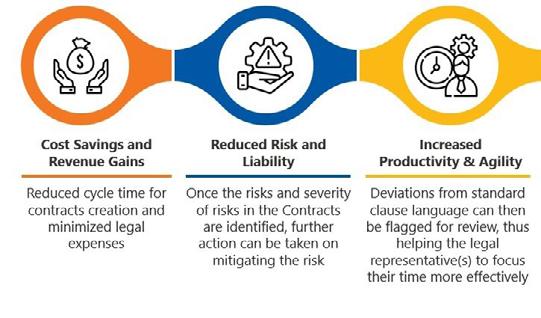

A world leader in direct procurement since 1995, JAGGAER offers a unified solution for users to manage 100% of their spend with JAGGAER ONE. Designed to be N.I.C.E. JAGGAER ONE offers a Network of enterprise buyers, suppliers and partners; intelligence that utilises AI and machine learning; Comprehensive solutions to support unique needs; and Extensibility to explore and deploy complementary solutions. Today, more than US$500bn worth of goods flows frictionlessly through JAGGAER’s Enterprise Commerce Network each year. jaggaer.com

Founded in 2006, Coupa is a leading cloud platform provider for business spend management (BSM). The technology provider is dedicated to delivering business value for its customers through greater visibility and control to spend smarter and safer. Adopting a Comprehensive approach to spend management, customers benefit from a unified platform where all spend can be seen in one place.
From strengthening supplier relationships to integrating leading technologies, Coupa is built on Openness when it comes to trust,
transparency and trade. To make it easy for every user to adopt, Coupa’s software works hard so you don’t have to, providing a User-centric approach that offers Prescriptive recommendations and Accelerated value by increasing end-to-end efficiency.
Coupa’s BSM software allows users to benefit from savings opportunities, supplier insights, optimised spend, and speedy transactions, for quicker decision making, greater agility, and faster time to value.

coupa.com


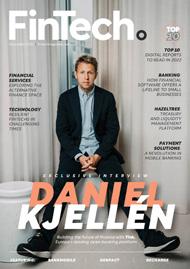


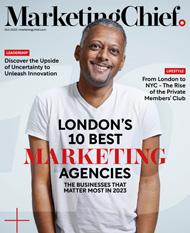





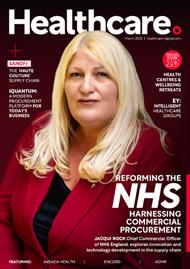











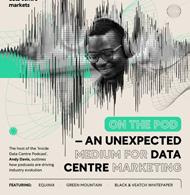
























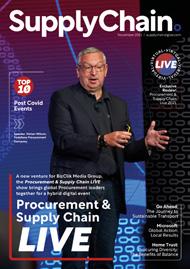

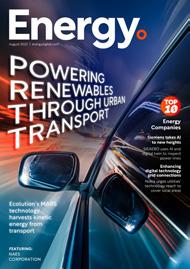






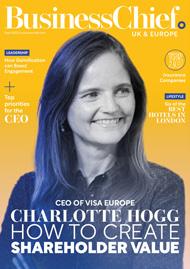

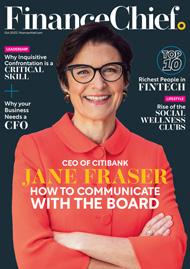




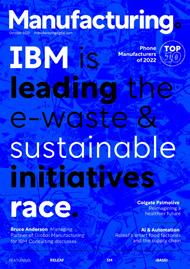


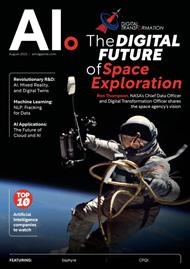
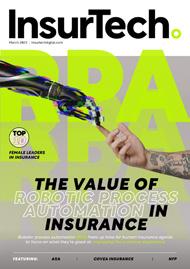







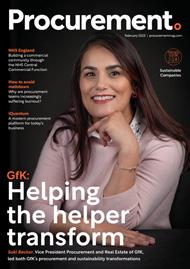



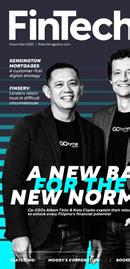
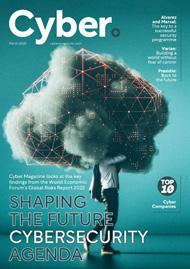
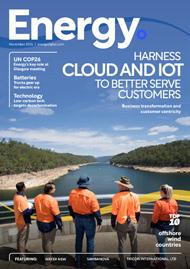

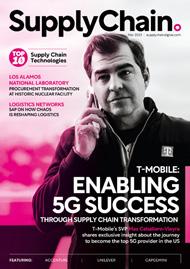



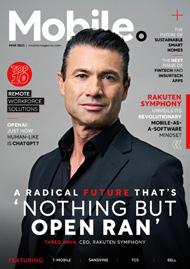
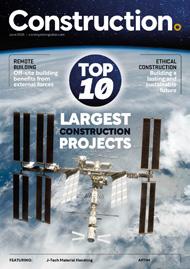

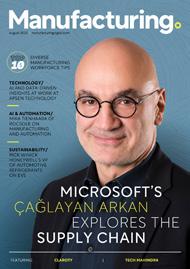




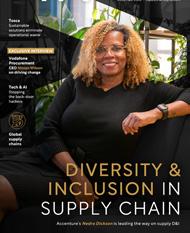


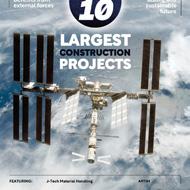











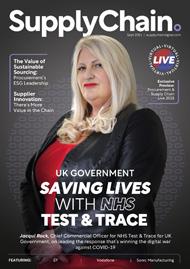

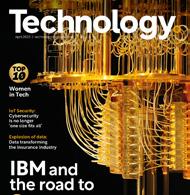





With over 5.3 million companies being connected over SAP Ariba’s online marketplace, SAP remains the most popular business-to-business platform for procurement. Its strict compliance culture means only approved suppliers are searchable on its database, from simple to complex catalogue enablement capabilities, content normalisation, and easy verification and upload times, makes it a top player in procurement platforms.

Due to its intuitiveness in comparison to many other procurement platforms, its high level of security, and the integration of some of the latest technology in automated processes, it is a worthy leader in the world
of procurement systems. With more than US$3.75tn in commerce flowing through the SAP Ariba Network annually, trust in the platform is growing in-line with the expansion of procurement transactions. SAP’s strategy is to help every business run as an intelligent, sustainable enterprise, and SAP helps companies of all sizes run at their best. SAP.com
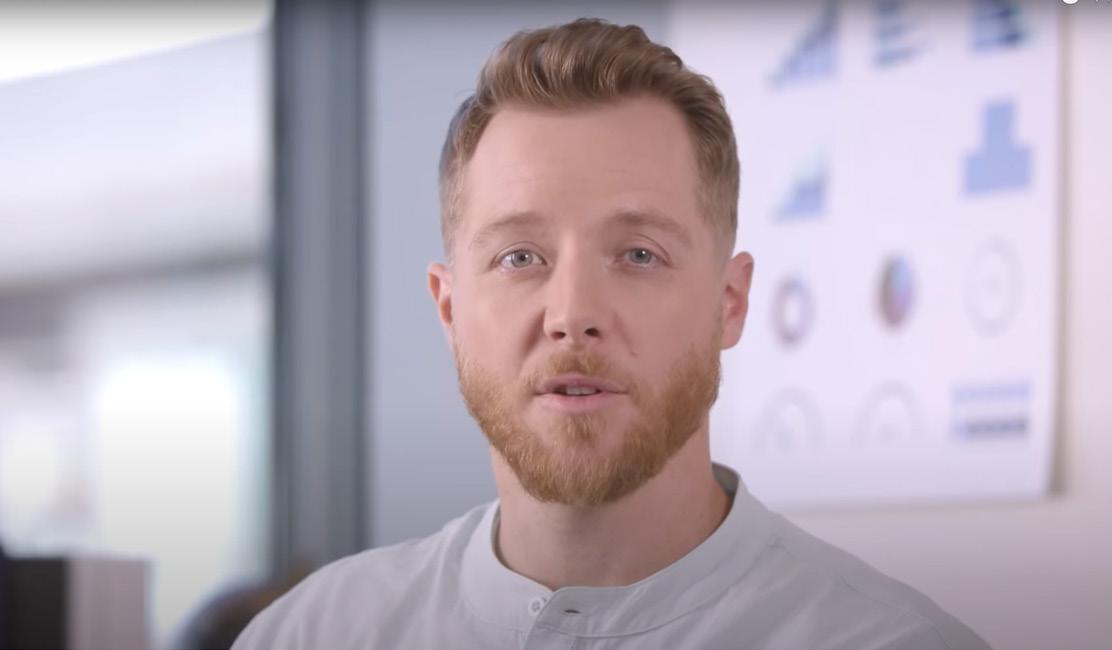


As President and Co-Founder of GEP, Neha Shah describes herself as an ‘accidental entrepreneur’
WRITTEN BY: NEIL PERRY


Aboom in the 1990s, she always felt that solving problems was more important to her than simply making money. As the company now helps to lead the conversation on the use of AI in the field of procurement and supply chain software, she still warmly looks back on the early days of the company and the strong grounding it has given the leadership team.
“As an early stage company, we had to do it all. I had to do it all from the administrative tasks, all the way to selling to Fortune 500 companies and getting a foot in the door,” she says, “to hiring our first people, to figuring out a plan for our product roadmap and becoming a product manager and learning along the way.”
These phases of growth and development over nearly 25 years of GEP have resulted in one of the world’s leading procurement
• AI-First is an approach that ensures that no stone is left unturned when looking for ways in which they can help customers derive greater value from their supply chain and procurement operations.

• AI-First does not mean AI-Only – far from it. Like any set of tools, how AI is used, and used to best effect, will be determined by the people and how they interpret and act on the information at hand.
a welcome challenge.
“Our next challenge is to continue to scale a fast-growing business while not losing the culture, attracting the greatest talent in the world and still continuing to pivot as the world around us continues to change in this generative AI revolution.”
Growing a company without losing a culture GEP has grown from a small team in a co-founder’s basement, to a world-wide enterprise with 26 global offices, 6,000 employees, customers in more than 100 countries and partnerships with some of the leading companies on the planet.
With so much competition in the space for procurement transformation, with established players and innovative startups continuously entering the fray, why do their clients and customers choose to partner with GEP? Shah briefly considers the question, but is emphatic in her reasoning why companies choose them over other worthy competitors.
“For most organisations these days, they want a long-term partner who is going to solve problems and be there with them every step of the way. At GEP, given that we’re founder-led, that we’re not just a startup with a nice new toy, but have been around for 25 years with the founders fully embedded in the business and working with a much longer term vision for the company,” she explains. “They believe in us. They believe in our people, our leadership team, and our product and expertise that we bring. All we do is live and breathe procurement and supply chain.”
26 global offices


6000 employees worldwide Customers in more than 100 countries


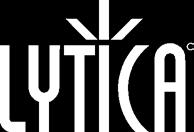

She also speaks with genuine passion about the role a company like GEP can play in helping their partners in the age of sustainability and all forms of ESG. She believes procurement and supply chain is the most important driver in helping companies reach their targets on climate change, decarbonisation, water usage, human rights, and living wage.
“GEP is playing a role in setting the targets and strategy for these large organisations and even mid-size organisations,” says Shah. “But to make that happen, it is all about the day-to-day processes and decisions that happen every single day for a company to run.”
If that is one way she feels GEP can help make a positive difference at every partner they work with, and every deal they help facilitate, Shah is certain they also have to lead the way both in the responsible use of Gen-AI, but in digital transformation of business.
“It’s very important for GEP to, what I’ll call, take its own medicine, but also be thinking three steps ahead. Really in some respects, predicting where the future is,” she says, knowing that if they are helping to guide others through digital transformations and evolutions, they as a company need to be beyond the leading edge of that same technology.
This leads to the subject of the value, potential and change being delivered daily by generative AI, that has exploded into the consciousness of the wider-public in 2023.

The intelligent implementation of AI technology is a subject that clearly inspires Shah, as she speaks excitedly about the ever growing potential, but realistically about knowing it is up to companies like GEP to be at the forefront of responsible implementation.
“At a GEP level, it’s AI, every day 24/7. When I think about AI, of course it’s
“I think it’s really important for GEP to take that leadership role, to cut through the hype”
NEHA SHAH PRESIDENT AND CO-FOUNDER, GEP
TITLE: PRESIDENT AND CO-FOUNDER
COMPANY: GEP
INDUSTRY: SOFTWARE, CONSULTING, AND SERVICES

LOCATION: CLARK, NEW JERSEY
As a co-founder of GEP, Neha Shah is an innovative, purpose-driven entrepreneur and executive. She has been instrumental in building and growing multinational organisations through her innovative strategies and decisive leadership.


artificial intelligence. I like to think about it as augmented intelligence,” she explains. “What I’m finding is that there’s tremendous potential, and yes, there are some real concerns and I can’t predict what is going to happen, but I do believe that I see a tremendous opportunity for augmenting the people and what they’re able to do in a 10-hour or 8-hour day.”
One word she regularly returns to is ‘hype’. “I think it’s really important for GEP to take that leadership role, to cut through the hype. I will say that I think there’s a lot of individuals who, because they don’t know where to start, it all feels like hype.”
Her focus is making sure that the importance of using AI intelligently is never overlooked, given the boundless potential of the technology, and breaking it down into micro-steps and processes to ensure they serve their intended purpose. She knows
that AI without true tangible value to her customers, is not the kind of progress GEP’s partners expect.
“I think for us at GEP, it’s all about AI every single day, internally and externally, and applying that knowledge to our customers. How do we now apply these wonderful large language models that are coming out?” she says, knowing the tremendous speed of change. “How do we apply the large language models and really make a difference in some of these processes using proprietary data? That is what is at the heart of everything GEP is doing, so our platform and our advice and expertise to clients is what we can provide and really help them transform this new world.”
The future of AI and GEP
Neha Shah takes the responsibility of being at the forefront of the AI age extremely


• There is currently very limited guidance on industry standard practice and ways to minimise organisational risks during adoption.
• A procurement team needs to keep a high level of control to make sure AI tools deliver ethical, responsible and reliable solutions.

• There is a role for various business functions in the deployment of AI solutions including product teams, IT, legal and procurement.
seriously, knowing the GEP plays a crucial role in supporting their clients, but also contributing to the wider conversation of how the technology can be responsibly implemented.
“The pace is so fast, it’s hard for a normal procurement supply chain function or professional to keep up. So our job is to keep up to date and then give the right advice,”
SUBHASH MAKHIJA, CEO AND CO-FOUNDER, GEP
“In the gold rush to apply AI to improve how companies source suppliers and manage global supply chains, there is a very real risk that organisations will dehumanise decisions and unintentionally ignore waste, Co2 emissions, and inequality, with devastating consequences to business, communities and the environment”
very limited guidance on industry standard practice and ways to minimise organisational risks during adoption, and that a procurement team needs to keep a high level of control to make sure AI tools deliver ethical, responsible and reliable solutions.

Shah never loses sight of the obvious potential of the technology, and explains how by helping to lead in the field, they are already implementing it into their offering. One such example is their Total Inventory Management Solution.
“It’s really remarkable. What we’re doing is in partnership with an organisation called Eliant Inventory Solutions, which is made up of different backers, Apollo, Athene, and B N P Paribas. We are enabling clients where we, GEP, provide the technology hub to free up working capital that is tied to the inventory that’s sitting in warehouses and allow clients to improve supply chain visibility and resilience,” she explains. “We bring the digital technology hub, if there’s parts of a process
that can’t be digitised, we bring some of our talent through our managed services team.
“We have customers like one of the world’s leading largest technology companies who are utilising this hub and they’re running their supply chain for some of their, what we call high volume, high value products.”
Shah speaks warmly about her passion for solving problems, helping people solve their own, and cutting through the hype to help her customers achieve in the age of AI, but what are the touch points that convince her she has achieved her goals in any given day?
“Because of the platform of GEP, particularly as it relates to ESG, how am I making a broader impact on the things I really care about, like seeing the end of child labour and trafficking in the world,” she says. “I really care about that and how in the dayto-day work I’m doing, how is that enhancing what I want to see in a better society, a better local community, regional community and a better world? It’s so important and that’s what keeps me going.”
“When I think about AI, of course it’s artificial intelligence. I like to think about it as augmented intelligence”
NEHA SHAH PRESIDENT AND CO-FOUNDER, GEP
 WRITTEN BY: HELEN ADAMS
PRODUCED BY: JAMES BERRY
WRITTEN BY: HELEN ADAMS
PRODUCED BY: JAMES BERRY



Monette Knapik is the Executive Director of Procurement Supplier Diversity for CVS Health. Knapik oversees all areas of the company’s Supplier Diversity programme. Up until 15 years ago, most of Knapik’s career was spent as an IT Program Manager at CVS Health. Then, until a role presented itself in enterprise procurement.
“My IT background came forward, but I quickly transitioned into more of a procurement operations role, where I had categories like wireless and wireline, travel, credit cards, contingent labour, store supplies and print operations.”
Knapik also inherited CVS Health’s Supplier Diversity programme, which became something she was most passionate about.
“Three years ago, I was told that I was going to be 100% dedicated to Supplier Diversity. I’ve often had responsibilities for this, but by making me 100% dedicated to Supplier Diversity, our leadership showed their commitment to the role of inclusion for women-owned, diverse, small businesses in our supply chain.”
CVS Health may not have an official office dog policy, but when Monette Knapik works from home, she’s joined by three pugs.
• Compliant with HITRUST CSF Certifications and SOC 2 Reports

• Providing on-demand reporting and communication storage solutions for transparency in data and processes
• Hiring and keeping seasoned employees who understand the specific requirements and demands of the healthcare industry
• Continually investing in cutting-edge equipment and technology to facilitate automation and speed of delivery LEARN MORE


Universal Printing Company delivers data-driven excellence in compliance and marketing printing under CEO Margi McGrath’s leadership
Universal Printing is a full-service document solutions business, which specialises in printing and mailing high-volume, data-driven compliance and marketing materials. The company operates 24/7 from secure facilities staffed by seasoned employees.


All of its work, including IT, is performed on site. 80% of Universal Printing’s business includes 50 healthcare companies, with hundreds of plans in every state. Most of the Service Level Agreements are 24-48 hours and an increasing amount of programme work has sameday turnarounds.
Margi McGrath has been the owner and CEO for 28 years. Her role is to ensure that Universal Printing does everything they can to meet or exceed clients’ expectations. The team is also obsessed with Quality Assurance. “People touring our plants ask how we keep production moving with so much QA, but it’s critically important - and the proof is in our results,” says McGrath.
Universal Printing’s diversity and inclusion
The fact that Universal Printing is owned by a woman has naturally led the company to prioritise Diversity and Inclusion.
“I think people are empowered to do their best work when they’re recognised and welcomed for who they are in the workplace,” she says. Universal’s relationship with CVS began over ten years ago, when Universal Printing attended a Supplier Diversity meeting at CVS headquarters.
“Monette Knapik and her team learned about our experience with high volume regulatory printing and mailing - work that’s data-driven, targeted, customised.” Universal Printing had the expertise and the security certifications that CVS was looking for. A few months later, Universal Printing secured their first job. Since then, business with CVS has continued to grow. “CVS has mentored us as a diverse supplier and made us a better company,” says McGrath.
At Gardner Resources Consulting, we are a proud NGLCC-certified Owned Business Enterprise staffing partner.
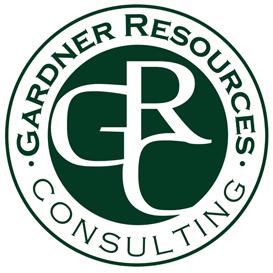
We value and prioritize an environment of diversity, equity, and inclusion. With over 25 years of experience in IT & Life Sciences staffing, we strive toward your definition of success.


Knapik takes her passions to the highest level, whether as a ‘dog mom’ or as Executive Director of Supplier Diversity. Knapik ensures CVS Health’s supply chain is sustainable and diverse.

CVS Health’s Supplier Diversity programme is broken down into four pillars:
This pillar represents all the Supplier Diversity initiatives that are based around the organic growth of existing and new diverse suppliers. For example, this pillar includes our CVS Health and Roger Williams University Executive Learning Series, which is a programme that provides business skill development through a course curriculum developed by RWU, executive coaching,
supplementary workshops and networking opportunities.
The purpose of this pillar is to aid the Supplier Diversity team in determining in which ways we can communicate what we are currently doing as part of Supplier Diversity as CVS Health, as well as our future plans.
“This pillar includes strategies such as our CVS Health Business Building Events, which communicates to all of our 150+ Prime General Contractors the benefits of doing business with diverse suppliers and why it is important to include diverse suppliers in their supply chain,” says Knapik. “This pillar also includes our Supplier Diversity campaign, which started in 2020 to help educate our internal
TITLE: EXECUTIVE DIRECTOR, SUPPLIER DIVERSITY

COMPANY: CVS HEALTH
Monette Knapik is a dynamic, thought leader responsible for Supplier Diversity at CVS Health who brings an unparalleled energy to the table. She is responsible for spearheading the four Supplier Diversity Strategic Pillars, which is comprised of, Supplier Education and Development, Communication & Program Branding, Community & Industry Relationship Building, and Performance & Process Management. Within these strategic pillars, Knapik is held accountable for the execution of these strategies, fostering strong external relationships and partnerships with both national and regional advocacy organizations, as well as cultivating internal business department buy-in with Senior leaders and executives.
One of Knapik’s many goals is to build robust supplier partnerships by promoting an enterprise-wide culture of diverse supplier inclusion by affording opportunities to those that can bring innovation to our leading healthcare solutions company.
With a strategic and innovative mindset, Knapik has developed several internal programs to support the strategic pillars of Supplier Diversity such as the Executive Learning Series partnership program with Roger Williams University, the Business Development and Community Engagement Program Series in partnership with Florida A&M University, North Carolina A&T University, and Morehouse College.
Each of these programs support the business growth and development of diverse suppliers. Knapik also encouraged the creation of the Construction Business Building Event fostering relationships between CVS Health General Contractors and diverse subcontractors to ensure diversity goes beyond the first tier of the supply chain. Lastly, the Supplier Diversity in Merchandising program was created to provide diverse suppliers direct access to merchandising decision-makers and provide them an opportunity to take part in one of the Merchandising pilot programs, either Test & Learn, or the Merchandising Launch Pad.
Knapik was also instrumental in the induction of CVS Health into the Billion Dollar Roundtable in 2017. Knapik is continually in search of ways CVS Health can continue to promote an inclusive culture, whether it be by growing diverse suppliers organically, welcoming new diverse suppliers into the supply chain, through the emergence of business skill development programs, or offering diverse suppliers direct access to decision makers. By evolving the Supplier Diversity Program, we can build supply chain excellence, add distinctive goods and services to our business offerings, and enhance our brand among customers.
As Knapik would say, “It takes a village,” and with the support of our Senior Leaders, we are able to effect change in the communities we serve!

colleagues about what Supplier Diversity is as well as the importance of Supplier Diversity and how we can work together towards a common goal. Additionally, this includes our marketing and advertising strategy as well our communication, alignment and engagement, with sourcing and business departments across the enterprise.”
“This pillar is where we continue to build new and existing relationships with advocacy councils through memberships, sponsorships and other types of engagement, such as national and regional conferences and events, where we can network with diverse suppliers across the country, as well as other corporations and organisations.”

MONETTE KNAPIK EXECUTIVE DIRECTOR, CVS HEALTH
“Whether I’m talking to a diverse supplier, engaging with a business stakeholder or talking to an advocacy group, I want to ensure that those behaviours are intentional in all the work that we do”
The Supplier Diversity team utilises this pillar to be able to track current spend from Tier 1 and Tier 2 suppliers to be able to benchmark and continue to grow that spend year over year through the support of business stakeholders and decision makers.

“We also utilise this pillar as a foundation to manage our processes, such as the review of Pharmacy Benefit Management and Health Care Benefits Requests for Proposal (RFPs), which may include diversity requirements for the utilisation of diverse suppliers,” says Knapik. “This pillar is also where we build upon different initiatives throughout the enterprise.”
Knapik and her team are accountable for these strategies. The key to all of them is fostering strong external relationships with national and regional advocacy groups like
NMSDC (National Minority Supplier Development Council) and WBENC (Women’s Business Enterprise National Council), as well as cultivating a strong internal business department relationship.
“Although I have senior leadership’s commitment to supplier diversity and inclusion, I really need to show the value of the programme to all of the business stakeholders, because at the end of the day, we’re influencers – not decision makers,” says Knapik.
So how does she get business stakeholders to include diverse suppliers in their supply chain?
“We share with them the value proposition of supplier diversity. For example, customer


and colleague representation, economic impact, innovation and support of our Aetna and Caremark client relationships.
“More and more clients are looking for us to be inclusive by having diverse suppliers support our Aetna and Caremark contracts,” she says. “There’s a significant emphasis on the Supplier Diversity strategy and how we’re going to support any diversity requirements in each contract.”

CVS Health is championing growth and new standards with its purpose driven programmes. This is going to be the ninth year that CVS Health has partnered with a local university to create a learning programme for 20 diverse suppliers.

“It covers topics including finance, social media and marketing, ESG matters and capital growth investment, to name a few. This helps the growth and development
of diverse supplier’s businesses. CVS Health has partnered with Historically Black Colleges and Universities to support the growth and development of diverse suppliers in their communities.”
CVS Health is a purpose driven company, making healthier things happen, together with millions of patients, members and customers.
“Our goal is to improve the health of the communities, with local presence, digital channels and dedicated colleagues,” says Knapik.
CVS Health puts people first, rises to the challenge, joins forces, creates simplicity and inspires trust.
“Hard work is fundamental to everything we do, so whether I’m talking to a diverse supplier, engaging with a business stakeholder or talking to an advocacy
PPOIC is a full-service national distributor of shipping and packaging materials, a manufacturer of wooden pallets and crates, and a logistics & warehousing company. Servicing businesses throughout North America.


LEARN MORE


PPOIC provides the most consistent service, cutting edge strategies, and comprehensive solutions for your packaging needs
group, I want to ensure that those behaviours are intentional in all the work that we do.”
In 2017, CVS Health was inducted into The Billion Dollar Roundtable (BDR). The BDR members are comprised of Fortune 100 companies, whose mission is to continue the growth and development of diverse suppliers, as well as to share best practices in Supplier Diversity.
CVS Health has long gathered data for its annual ESG report, however we have become more intentional in 2023 in partnering with the company’s ESG team. Some examples of this are, including ESG questions in our RFPs and updated our Supplier Diversity policy and training module to include ESG language.
Our next step is to include language in our Master Services Agreement in which suppliers may be required to report their sustainability efforts.
Community business focus
CVS Health’s Supplier Diversity team has partnered with the company’s Project Health team in bringing Project Health to various advocacy group conferences to provide free health screenings to their attendees. The company is bringing Project Health to the National Gay Lesbian Chamber of Commerce (NGLCC), as well as the US Hispanic Chamber of Commerce (USHCC) and the Center for Women and Enterprise (CWE), in the coming months.
CVS Health works with several diverse and/or small vendors, including WEI, GARDNER Resource Consulting and Universal Printing Company.
“WEI is a technology reseller and innovator that has brought innovative solutions to the table, primarily for our retail business.
The Gardner Resource Consulting Group is an IT contingent Labour IT and digital


“Our goal is to improve the health of the communities, with local presence, digital channels and dedicated colleagues”
MONETTE KNAPIK EXECUTIVE DIRECTOR, CVS HEALTH
contingent labour vendor, which provides diverse talent and resources to support CVS Health’s IT and digital needs.
“Universal Printing supports our pharmacy benefit management side of our business to support the printed member communications for our Caremark clients. Planned Packaging of Illinois supports our packaging needs for our mail order pharmacies, as well as many of our distribution centres across the country.”
Gardner Resource Consulting GroupOver the next 12 months, the Supplier Diversity team will break down barriers, knowing that it is difficult for small and diverse businesses to be onboarded and do business with a company as large and complex as CVS Health.
“We’re looking at different ways to make it easier for them to get through the contracting process, to be set up in our accounts payable system and provide better payment terms.”

The company is also working on a supplier diversity professional mentorship program. CVS Health’s goal is to spend US$5bn with small and diverse businesses by 2030.
“In the next year, we want to create a supplier diversity advisory committee,” she continues. “This would involve various business advocates from across our enterprise to work towards a common purpose to grow our inclusion of diverse suppliers in our supply chain.”
The Global Supply Chain Awards 2024 will be celebrating the very best in Procurement & Supply Chain with the following categories:
Procurement Transformation Award
–Digital Supply Chain Award –Global Logistics Award –Supplier Diversity Award –Supply Chain Innovation Award –Supply Chain Sustainability Award –Procurement Technology Award

Procurement Consultancy Award –Future Leader Award –Executive of the Year Award –Project of the Year Award –Lifetime Achievement Award



Category management is fundamental to a healthy procurement function, it allows organisations to segment spend into areas that contain similar or related products – and thus to focus on categories that present the strongest opportunities for consolidation and efficiencies.
But technology is moving quickly forward, as are businesses, and the danger is that category spend managers can get left behind – using yesterday’s solutions to meet tomorrow’s challenges.

Etosha Thurman is Chief Marketing & Solutions Officer, Intelligent Spend & Business Network at SAP. Thurman’s role is to drive product marketing and solution management across SAP’s intelligent spend solutions and the SAP Business Network.
Thurman is perfectly placed to advise on category management strategy. She says the steps involved in developing a successful strategy include:
• Defining logical product and service categories
• Collecting data on past spend and prices
• Conducting a sourcing analysis of materials and who is producing them
• Carry out a should-cost analysis, to better understand supplier economics
• Gathering information about markets, regulations, and risks
“They should also collect and analyse data on who else is buying products or services that they plan to procure, and why they are buying,” adds Thurman.
WRITTEN BY: SEAN ASHCROFT“This creates a picture of the category in which they are working and helps them to understand market conditions.”
The use of category management can give procurement teams a competitive advantage –but what is the importance of constantly looking for ways to improve?

Empower your entire ecosystem to drive real and meaningful change.

Suppeco leverages the potential in relationships to solve key challenges within the value chain.

An award-winning solution built for the real world.
Take a tour
After gathering this data Thurman believes that procurement professionals have the bones to develop and execute a category strategy.


“Ideally they should monitor the progress of their category initiatives, to measure benefits and cost savings, and adjust the strategy for changing market conditions,” explains Thurman.
But when asked if businesses are maximising value from their category management strategies, Thurman says she believes they are not.
“This is largely because many of the tools are the same that category managers have been using for years.
I started my career as a sourcing manager, and the most difficult thing to do – besides finding sources of supply – was putting together a category plan and strategy,” explains Thurman.
“A big area for improvement is getting business stakeholders involved and understanding their roles in the category management process”
ETOSHA THURMAN CHIEF MARKETING & SOLUTIONS OFFICER, INTELLIGENT SPEND & BUSINESS NETWORK, SAP

Thurman
TITLE: CHIEF MARKETING & SOLUTIONS
OFFICER, INTELLIGENT SPEND & BUSINESS NETWORK
COMPANY: SAP
INDUSTRY: SOFTWARE
LOCATION: US
Etosha Thurman is Chief Marketing & Solutions Officer, Intelligent Spend & Business Network at SAP.
Thurman’s role is to drive product marketing and solution management across SAP’s intelligent spend solutions and the SAP Business Network. She has been with SAP since 2016, with the last two years spent in her current role.
She has extensive experience in software as a service, cloud commerce, financial services, customer success management, and global materials management.
She adds that it is “a disparate process”, with data collected manually in isolated spreadsheets, Word documents, and PowerPoint presentations.
“This is very time-consuming,” she says, “and such documents never come together as an integrated collection of data.”
She adds: “Too often once the team executes the category plan the strategy documents get shelved and there is no follow-up – no process to measure benefits or cost savings, and no opportunity to adjust the strategy.”
This is why category managers need technology that “brings together process and data”, explains Thurman, technology that “provides insights into the steps that can be taken to meet the category goals.”
As for common mistakes in category management efforts, Thurman says too many organisations see it as a way to reduce cost, something she says can lead to sourcing exercises in which “scant attention is paid to strategic supplier relationships or optimal supply allocation to achieve corporate diversity or sustainability goals.
In these cases the pattern is to run a request-for-proposal and choose the lowest price.”
Thurman feels many organisations are missing out on the opportunity to conduct thorough spend data analyses, and “as a result they cannot develop a long-term category strategy and execution plan,” she says.
“It is this that can lead to cost reduction, if that is the goal, but it can also incorporate other positive outcomes for the business.”
So how can organisations improve results around procurement category management?
“Digitalisation has been an ongoing trend for many years, although category management is just catching up”
Categorisation: classifying organisational requirements and segmenting into categories creates expertise, and market knowledge to deliver innovation
Aggregation: collating the total business requirements can achieve a reduction in purchase prices and overall costs by increasing volumes and reducing the number of transactions and agreements

Standardisation: setting a standard set of policies and procedures for individual users and cross-functional teams for consistency and tracking benefits
Relationship management: enabling a clear and consistent exchange of knowledge and information with suppliers and key stakeholders to build relationships and add value
Outsourcing: identifying opportunities to utilise expertise from third parties, who have the skills or expertise to add value which enables staff to focus on other core activities.
“A big area for improvement is getting business stakeholders involved and understanding their roles in the category management process,” says Thurman.
She adds: “When stakeholders work collaboratively with category managers the process can be steered toward achieving specific business goals, such as ESG targets or efficiency objectives, rather than simply procuring a product or service at the lowest price.”
And what of technology? Can AI be used to improve performance? Thurman feels AI has the potential to improve performance in many significant ways.
“Many of the tools are the same that category managers have been using for years”
ETOSHA THURMAN CHIEF MARKETING & SOLUTIONS OFFICER, INTELLIGENT SPEND & BUSINESS NETWORK, SAP
“For example,generative AI might be used to automate category management process steps,” explains Thurman. “Integration with generative AI tools makes it possible to provide real-time insights into a range of category management topics. These include market dynamics summaries, risk perception for the underlying commodities, insights on the impact of changes in laws and regulations, and cost structure updates, to name a few.
“AI might also be used to predict opportunities for savings, or to develop future demand forecasts.”
Overall, Thurman feels AI has the potential to change the way category management

practitioners work. “I can see it enabling them to focus their expertise on strategy development, execution, and monitoring,” she says, “rather than the mundane and manual tasks that can dominate their time.”
She also feels data analysis is another key impact area, “because AI tools are able to analyse such vast amounts of information.”
Data analysis and research helps category managers understand the broader market for what they are buying.
“Access to robust market data for analysis also enables businesses to visualise their relative position in the market,” says Thurman. “This will drive strategy
and help businesses adjust quickly as market conditions change.”
She adds that when businesses digitalise their processes with a category management system “they can readily access data as they develop category profiles, define category strategies, and drill down on the data to identify opportunities.”

This can help category managers identify trends and patterns in the purchase and sale of the goods and services they source.
“It has been said that strategy is seeing a pattern in a stream of decisions. Seeing these patterns in streams of data –and making adjustments based on patterns – is crucial to developing effective category strategies,” notes Thurman.
“As such, the use of technology invariably leaves executives with one eye on the future, and Thurman says that in the years to come it will be important for category managers to keep up with the pace of change.
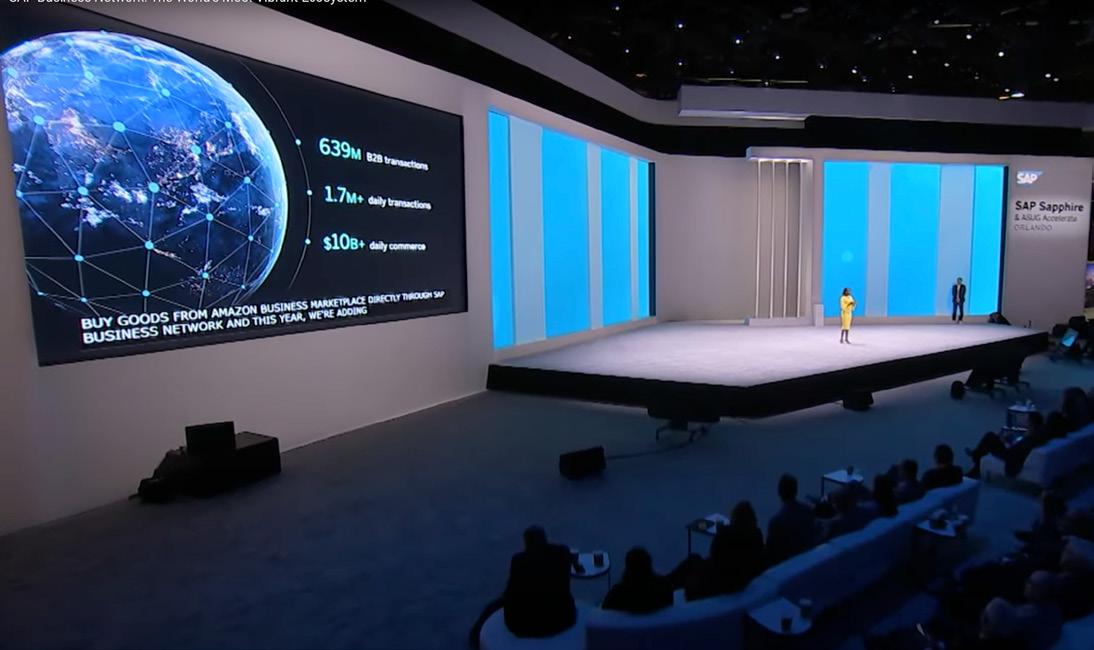

She says: “Digitalisation has been an ongoing trend for many years, although category management is just catching up. For the past two years, surveys conducted by Economist Impact, sponsored by SAP, have shown that executives worldwide consider category management to be one of the top reasons for their businesses to undertake a digital transformation.”
Thurman points out that digitalisation means moving manual processes “into
a robust category management system.” This, she points out, offers benefits that include improvements in data collection and analysis, standardised category classification frameworks, and digital integration of category planning with source-topay systems.
She says: “This integration enables a closed-loop process where the procurement team can monitor the progress, and ideally the success, of the category strategy.”
 WRITTEN BY: TOM CHAPMAN
PRODUCED BY: CRAIG KILLINGBACK
WRITTEN BY: TOM CHAPMAN
PRODUCED BY: CRAIG KILLINGBACK


Central Co-op can trace its history all the way back to the mid-19th century, when the modern co-operative movement was just taking off.
Today, it exists as the second-largest co-operative in the UK, having assumed its current form following the merger of Anglia Regional Co-operative Society and Midlands Co-operative Society back in 2013.
At the heart of Central Co-op’s operations is its retail offering, consisting of more than 250 convenience stores across the nation. On the other side of the business is the funeral division, comprising 180 funeral homes, a crematorium, three stone masonry outlets and a coffin factory. And that’s without even mentioning the organisation’s property arm, responsible for buying, selling and maintaining thousands of buildings.
Many of Central Co-op’s core values remain the same as those established around 175 years ago but, in 2021, the company unveiled its new purpose: to ‘create a sustainable society for all’. This ethos now stretches right across the business, impacting decision-making and actions at every level of all departments.
That includes in the field of procurement, which is headed up at Central Co-op by Paul Lockwood, who joined the company in February last year.
“Within that new strapline there are numerous themes,” explains Lockwood.


“There’s the environment and sustainability; there’s self-funding; there’s inclusion; and there’s self-help, as well.
“You may think when you join Central Co-op that you’re joining a movement, but actually what you join is a social movement, which makes for an interesting dynamic. It’s amazing how, more than 150 years after the first co-ops were started, their core values are still just as relevant today.”
Energy crisis accelerates
Central Co-op’s solar strategy
It certainly hasn’t been a straightforward start to life at Central Co-op for Lockwood, who

“It’s amazing how, more than 150 years after the first co-ops were started, their core values are still just as relevant today”
PAUL LOCKWOOD HEAD OF PROCUREMENT, CENTRAL CO-OP
became Head of Procurement just a couple of weeks after the global energy crisis escalated thanks to Russia’s invasion of Ukraine.
However, as the saying goes, in the midst of chaos there is also opportunity. That opportunity for Central Co-op came in the form of accelerating its investment in solar power, an important future-proofing strategy that had long been discussed.
Solar panels were installed at two convenience stores by the end of July; within a further eight weeks, Lockwood and his team had tended and contracted a provider to roll out solar panels at no less than 180 stores by end of 2023.


TITLE: HEAD OF PROCUREMENT
COMPANY: CENTRAL CO-OP
LOCATION: ALREWAS, ENGLAND
Paul Lockwood has worked in the field of procurement for more than 20 years, including in both the public and private sectors. For six years, Paul headed up procurement at BNP Paribas Personal Finance, before moving to Dignity in 2019 to lead the company’s procurement transformation programme. Last year he joined Central Co-op to look after GNFR for the entire retail and funeral business. Over the past 18 months, he has overseen the rollout of solar panels across 180 stores and modernisation of the organisation’s ceremonial fleet. Paul has a proven track record in delivering year-on-year savings and process improvements through the application of innovative business techniques and by optimising operating and delivery models.


Through expert insight and tailored advisory services, Inspired PLC empowers businesses to manage their energy costs, consumption and net-zero strategies.
Inspired PLC are a leading technology-enabled service provider supporting corporate businesses to control energy costs and transition their journey to net-zero carbon.

Energy is a significant overhead and now a board-level concern for UK organisations. Inspired PLC provides the expert insight and tailored advisory services to help businesses manage their costs, optimise energy consumption and reduce their carbon emissions.


Inspired PLC also helps clients to prove their net-zero and ESG credentials to their investors, customers and other stakeholders.
“We know that reaching netzero is a massive challenge
for any organisation, but with the right support and advice, businesses can achieve these goals in a commercially and operationally beneficial way,” says Alex Mackey, Account Director at Inspired PLC.
“Our purpose can be summarised as helping businesses manage their journey to net-zero and responding to the climate emergency whilst controlling their costs.
“Our solutions create clear and actionable long-term plans to help realise these goals.” All businesses need to understand how to effectively control their 4Cs; cost, carbon, consumption and compliance.
Co-operatives, owned by members, aim to positively impact their communities, including the environment. They typically have large and diverse portfolios, so energy and carbon make up a key operational cost. Energy and sustainability is often seen as
an area of complexity, but it is also an area of opportunity to look to reduce impacts on the environment wherever possible.
Inspired PLC is assisting cooperatives to formulate a strategy to best manage these energy risks through innovative and collaborative procurement solutions, while exploring every avenue to reduce consumption and ultimately carbon emissions, helping to further those goals to have positive impacts on their community.
Mackey concludes: “In light of the mounting challenges businesses encounter in addressing sustainability and ESG concerns, it is crucial for them to engage expert advisors who can demonstrate to their stakeholders a comprehensive plan to effectively manage costs, achieve carbon neutrality, and enhance their ESG performance.”
Moreover, in May the company opened a new shop in Staffordshire which, for the first time, had panels pre-installed.

“We’re just over a third of the way through that journey and we’re very fortunate to have an executive and board who want to kick on with the investment,” says Lockwood. “We’ll have payback in less than three years based on our current commercial model which, for us, is unheard of.
“For me, it’s brilliant as well because it’s something I’ve always been passionate about.”
Praising Central Co-op’s key partner on the project, he adds: “The supplier we’ve had, SolPV, has been amazing and really hit the ground running.
“Now, the exec is asking me ‘what’s next?’, which is exciting and it’s great to be challenged like that.”
PAUL LOCKWOOD HEAD OF PROCUREMENT, CENTRAL CO-OP
“For us as an organisation, investing in a green funeral fleet is massively important, and there’s also an expectation from the public”
Bidding to become self-sufficient
Creating a sustainable society for all covers numerous aspects but, as Central Co-op’s solar efforts suggest, a significant proportion of the strategy relates to energy usage and becoming more selfsufficient in this space.
In the relatively near future, it is hoped the organisation will be producing 100% of its own power, which is evidently a big ask. Nevertheless, things are most certainly heading in the right direction.
2014 Year founded
7,000+ Number of Employees £961.4mn Revenue
Lockwood forecasts that the solutions currently being put into place at convenience stores will produce around 30% of the energy needed in a supermarket setting. Within that, simple steps have been

taken such as investment in more efficient freezers and putting doors on chiller cabinets.
“It all contributes,” Lockwood goes on. “It’s all very well producing green electricity, but it’s no good if you’re then burning it off really quickly.”
That all-important co-operative team spirit is truly coming to the fore from an energy perspective, with the launch of a new consortium including Central Co-op and a host of independent co-ops. The goal is to collaborate on the purchase of utilities, while sharing knowledge and investment opportunities.
“This is a journey we’re going on together,” says Lockwood. “We’re trying to share that
good information between ourselves to help each other on that journey.
“There has always been co-operation, but last year – with the energy crisis and cost-ofliving crisis – created a need to do more, and it has been fantastic. Coming together and sharing resources will help us to be more sustainable, not just as individual societies but as a movement.”
Crucial to Central Co-op’s values is looking after its people, to the extent that its investment in renewable energy capabilities has also been extended to colleagues.
“It’s great investing in our stores,” continues Lockwood, “but part of what we do as an organisation is invest in our colleagues.”
After receiving various enquiries, Central Co-op reached an agreement with its solar provider to extend the commercial terms of their deal to staff, giving them the option to purchase clean energy infrastructure such as panels or EV chargers.

“For us, it’s about putting options in front of our colleagues and leaving the decision up to them,” says the procurement chief. “It’s quite a unique scheme, but it’s something we had the ability to do.
“So far, we’ve had about 200 colleagues show interest and it’s only been going for a few weeks. It definitely helps as well that we’re offering them a trusted provider with a quality product that is going to last.”
Despite the industry’s obvious traditions, Central Co-op has been careful not to overlook green aspirations in its funeral business, too. This process has begun with its fleet of vehicles, which can cost upwards of £120,000 apiece – making for a complex and expensive transition.
“What we’re doing is quite cutting edge for the industry and it’s an exciting time for us”
PAUL LOCKWOOD HEAD OF PROCUREMENT, CENTRAL CO-OP



“It’s a significant investment,” Lockwood explains. “For us, we had an ageing fleet and we had reached a crossroads, so you could say it’s been a case of right place, right time.”
In looking to go green, Lockwood’s team went through an exhaustive procurement tender exercise, before finally identifying the Ford Mustang Mach-E as its limousine and hearse solution. The new fleet is due to be rolled out over the next 12 months.
Investment has also been made in charging infrastructure courtesy of a new partnership, and will evolve as the fleet expands: “For us as an organisation this is massively important, and there’s also an expectation from the public. This investment has been really popular with our colleagues as well.

“We are a traditional business, but we have to evolve. When we’re talking about helping the environment, we need to look at every aspect of what we do.
“I think what we’re doing is quite cutting edge for the industry and it’s an exciting time for us as a business. There are bigger providers and bigger competitors out there who are maybe not as far down the road as we are in this space.”
‘Amazing’
Clearly, a vast operation like Central Co-op cannot function without crucial input from partner organisations.
“We’ve been fortunate to have some amazing partners,” says Lockwood. “One of the things we talk about with regards to partnerships is trying not to just have a transactional relationship. We want to put in effort across the business – not just in procurement – to drive value and sustainability.”
One such example of a fruitful partnership is with Lyreco, which has spent time trying to
Central Co-op is the secondlargest co-operative society in the UK Central Co-op employs around 7,700 people across divisions including retail and funeral services Central Co-op’s history can be traced back to the modern co-operative movement of the mid-19th century


Do more with less!
Experience Zycus' Merlin AI solutions exclusively available in a sandbox environment.
Explore Merlin Experience Center Now!
“One of the things we talk about with regards to partnerships is trying not to just have a transactional relationship. We want to put in effort across the business – not just in procurement – to drive value and sustainability”
PAUL LOCKWOOD HEAD OF PROCUREMENT, CENTRAL CO-OP
understand the motivations of Central Co-op and its colleagues. As a provider of supplies and workplace solutions, the firm introduced a bio-hygiene cleaning product which has proved to be a roaring success in terms of cost reduction and environmental benefits.
Technology-wise, Central Co-op recently implemented a purchase-to-pay solution provided by Zycus, a pioneer in cognitive procurement software. Positive impacts have already been seen in various departments through the automation of processes which were previously paperbased or required manual inputting.

Lockwood adds: “We’re trying to create a core of suppliers who we work with and, instead of us just going to them, we want it to be a two-way street, giving them the opportunity to talk about what they can do.
“For us, with our suppliers, whether it’s in the retail business, property business or funeral services, that’s a common approach we’re trying to roll out at the moment.”
Central Co-op has also entered into a partnership with Inspired Energy, a consultancy which is helping various co-ops with the process of buying utilities.
Lockwood continues: “Their insight so far with regards to the environment has been massively powerful. They’re helping us future-proof ourselves as an organisation which, in essence, involves buying smartly and buying with the right people – but also looking at who we are in terms of sustainability, which is at the heart of what we do.”
With eyes on the future, Lockwood believes macro-economic factors and the growing importance of sustainability must remain key considerations in the procurement space.
The war in Ukraine has, of course, had a profound impact on the supply chain and forced companies to rethink their suppliers.
“We are living through turbulent times,” Lockwood concludes. “What’s going on in Ukraine has been utterly horrendous and there has been a huge knock on effect throughout the world.
“One of the things I’m looking at and considering is the ability to source locally because shipping goods over from the Far East is more expensive. Sustainability’s massive as well, so local sourcing is important when we start looking at our carbon footprint.
“I think for us, working in procurement, we’re probably going to find more challenges and demands in understanding who our supply base is in more detail and measuring their impact on the environment.”

How technology can help hard-pressed procurement teams stay on top of the ever-changing supply chain regulatory landscape
WRITTEN BY: GEORGIA WILSONegulatory compliance in procurement is a key aspect of effective risk management strategies in today’s everchanging world.
As the global regulatory landscape evolves, companies that are non-compliant with state, federal, and international laws and regulations risk exposure to potential
lawsuits and financial liabilities, as well as reputational damage.
“Contracts often contain important clauses related to compliance,” says Bernadette Bulacan, Chief Evangelist at contract management software software company, Icertis.
She adds: “Such compliance can ensure integrity, safety and ethical behaviour in the

Gain visibility into rebate program performance
Easily calculate, pay, accrue and forecast your rebates
Grow stronger trading relationships
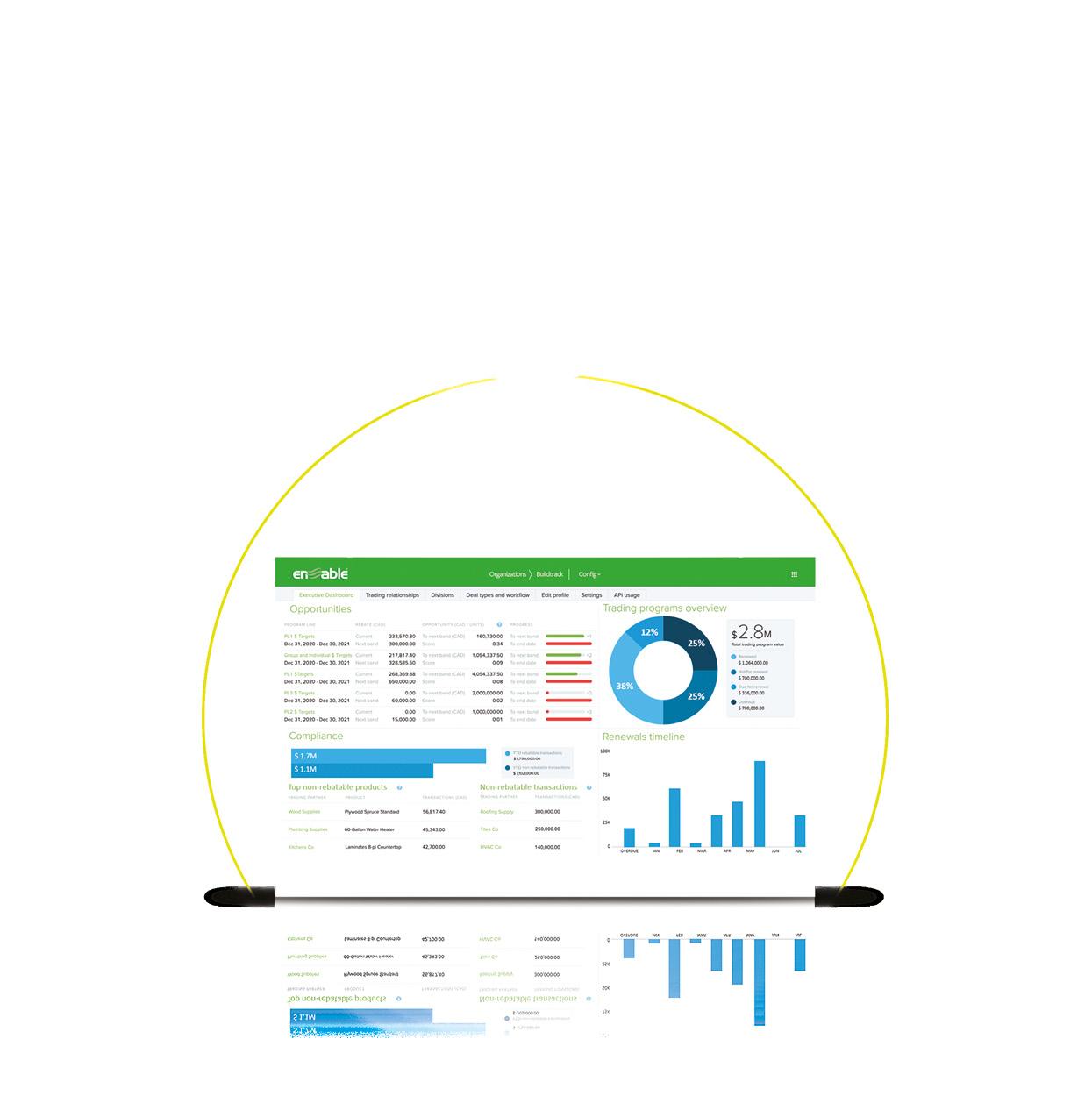
workplace and business operations, and procurement teams are key to enterprise-wide contracts.”

Adhering to regional and national regulations has always been a challenging aspect of the procurement function to ensure their products and services meet quality standards but “what’s changing is the volume and scope of legislation that procurement and supply chain leaders need to be intimately aware of, track, and report,” explains Jonathan Kinghans, Senior Director, Digital Procurement Transformation and Managed Services at business consulting and services company, GEP.
He continues: “Procurement is at the forefront of ensuring organisations
TITLE: CHIEF EVANGELIST
COMPANY: ICERTIS
INDUSTRY: SOFTWARE
LOCATION: US
Bernadette Bulacan is an entrepreneur and technology evangelist committed to disrupting complex and global enterprises through the use of technology, artificial intelligence (AI) and data science. She is a leading expert on the use of legal technology, KPIs, and data drive efficiencies within the profession, and has partnered with innovative organisations, products, and strategy teams.
 Bernadette Bulacan
Bernadette Bulacan
achieve stated commitments to fair labour standards and reduced environmental impact. Getting it wrong risks reputational damage and may lead to investor or insurance withdrawal, as well as a fall in consumer confidence.”

In a busy procurement department, ensuring ongoing compliance throughout a supplier relationship can be a challenge when managing large volumes of commercial agreements “However,
the manual processing of contracts can mean critical compliance clauses are missed in negotiations, and that the obligations agreed to are not properly tracked, managed, or enforced,” explains Bulacan.
Bulacan says this is why digitalisation is the solution.
She explains: “By digitalising the contracting process, procurement can gain a comprehensive paper trail in the event of regulatory agency enforcement or action, by capturing a company’s ongoing efforts to comply with regulations and standards. She adds that emerging technologies such
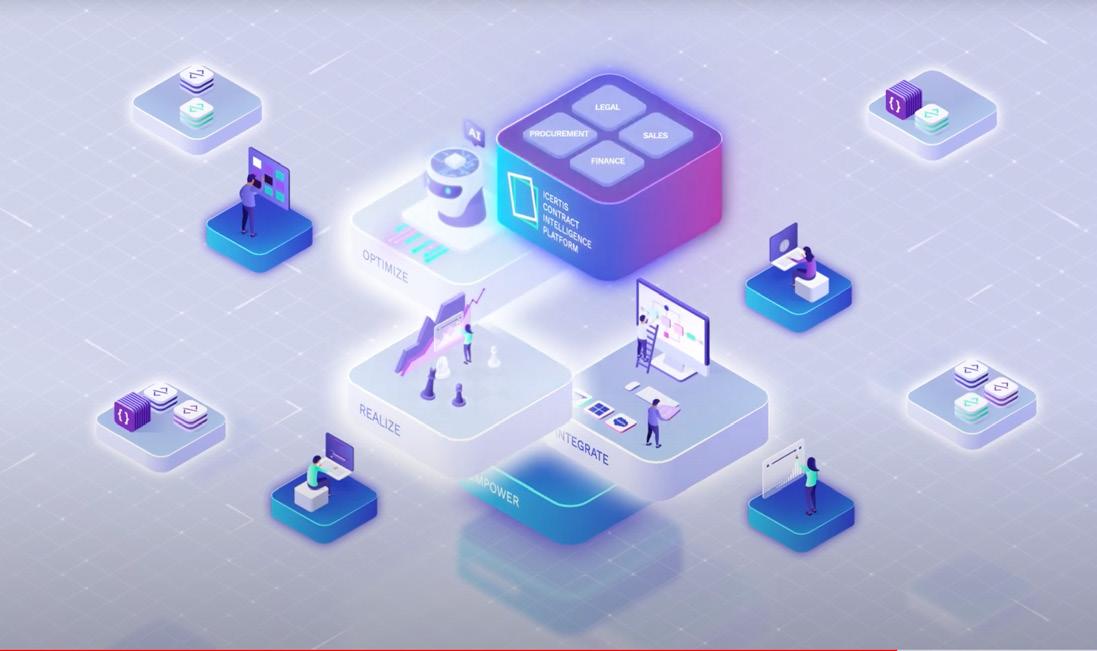
as AI can help ensure compliance across supplier relationships, and guarantee that language and clauses intended to protect an organisation from risk exposure are included in contracts.

“By adopting AI within contract management processes, procurement teams become equipped with the efficiency and visibility into data, and this allows them to manage complex contract portfolios and effectively take a preventative role in mitigating risk,” she continues.
Echoing these views is Anders Lillevik, CEO and Founder of data risk
“Technology advancements and AI are enabling procurement teams to simplify the risk monitoring process”
ANDERS LILLEVIK CEO AND FOUNDER, FOCAL POINTAnders Lillevik
TITLE: CEO AND FOUNDER
COMPANY: FOCAL POINT
INDUSTRY: SOFTWARE
LOCATION: US
For more than 15 years, Anders Lillevik has held executive leaderships roles in the world of procurement. Working for the likes of Webster Bank, Fannie Mae, QBE Insurance, and Nitor Partners, Lillevik today is the CEO and Founder of Focal Point.
With the rise of generative AI tools such as Icertis ExploreAI, procurement teams can harness even more powerful AI tools to uncover ‘hidden’ areas of risk.
For example, generative AI applications pinpointing contracts lacking critical language, such as data privacy clauses, enable procurement teams to accelerate contract reviews while reducing risk.
Procurement can automatically flag contracts that deviate from standards for legal review. This helps legal teams focus on higher-risk commercial agreements, and also saves time in contract reviews.
 Bernadette Bulacan, Chief Evangelist at Icertis
Bernadette Bulacan, Chief Evangelist at Icertis
management company, Focal Point, who says: “Technology advancements and AI are enabling procurement teams to simplify the risk monitoring process by providing more-timely visibility and action on risk, whether it’s auditing their suppliers or evaluating compliance risk in existing contracts. This enables organisations to shift risk management from a backwardlooking activity to an integral part of day-to-day operations.”
It is clear that keeping up to date with regulatory changes can be challenging,

“having a clear idea of processes, and an understanding of how and when decisions are made within those processes is vital for identifying compliance gaps because it allows procurement teams to chart where the controls are addressed in the process flows,” explains Lillevik.
So what does this mean for changing European Union (EU) regulations such as the German Due Diligence Act (LkSG)?
With only 4% of German companies prepared to implement the Act and 70% poorly prepared, Kinghans sees most of GEP’s clients increasing their investments in AI-driven software solutions to gain greater visibility and tracking across the

The German Supply Chain Due Diligence Act went into effect on January 1 2023. It means German companies face fines of up to 2% of their global turnover if they cannot demonstrate ESG transparency in their supply chain.
It also means non-German firms that supply a large German company, in any sector, will have to provide large amounts of detailed ESG data to their German customers in order to keep doing business with them.
TITLE: SENIOR DIRECTOR, DIGITAL PROCUREMENT TRANSFORMATION AND MANAGED SERVICES
COMPANY: GEP
INDUSTRY: BUSINESS CONSULTING & SERVICES
LOCATION: IRELAND
Jonathan Kinghans is an experienced Senior Director Consulting with a track record for delivering cost reduction, supply chain transformation, and managed services change programmes for global companies. Kinghans is skilled in opportunity assessment, operating model design, outsourcing transition execution, process and operations improvement, and change management.
value chain to drive compliance, reduce risk and costs, and subdue volatility.

He says: “Being able to meet the requirements of the Act is top of mind of procurement. But it’s just one of numerous challenges, all of which require greater visibility, control, and accountability of global value chains.
“Layered on top of this is the challenge of how to apply new AI and ML solutions to supply chain data, how to automate processes, how to flag areas of non-
 Jonathan Kinghans
Jonathan Kinghans
compliance and risk, and how all of this should inform decision making.”
Kinghans adds: “It is important companies don’t see this as an EU thing. It’s not. It impacts any company with more than 500 employees and US$165m in revenues that has a presence in the EU.
Non-EU companies that do not comply face heavy penalties. These include a ban from selling goods or a fine of up to 5% of global revenue. This will be expanding to any company

with more than 250 employees and US$44m revenue.
Kinghans’ advice is to get the basic decisions done first. “Begin with how procurement needs to deliver what is needed. Then look at how to gain visibility into the value chain, and determine who is accountable for compliance in the team. Then measure and report Scope 3 emissions, and once all of this is in place, the focus should be on developing a realistic plan to reduce emissions.”
“What’s changing is the volume and scope of legislation”
JONATHAN KINGHANS SENIOR DIRECTOR, DIGITAL PROCUREMENT TRANSFORMATION AND MANAGED SERVICES, GEP
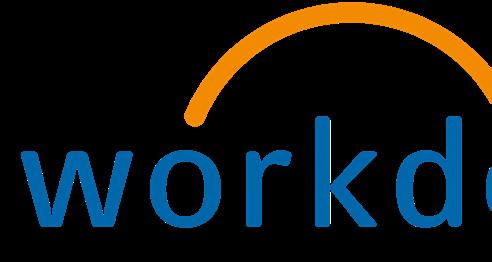
 WRITTEN BY: NEIL PERRY
PRODUCED BY: JAMES WHITE
WRITTEN BY: NEIL PERRY
PRODUCED BY: JAMES WHITE


With some businesses operating with multiple ERP, procurement, merchandising or warehouse systems that may not communicate intelligently with each other, it can create a complex set of problems that lead to wasted time, money and effort.

When financial management experts Workday and software solutions specialists Hyland first began working together in 2015, with different perspectives on such problems, it created an opportunity for a solution that can join disparate systems together and solve a wide range of issues. They set in motion a partnership that would result in the development of the Hyland Direct Spend Matching for Workday solution that provides any organisation that pays direct spend invoices with more efficiency, accuracy and visibility.
With different experts coming together, it was a collaboration primed to offer this product that would maximise the strengths of each other.
“The solution that Hyland offers is called Hyland Direct Spend Matching for Workday,” says Danielle Simer, Product Manager at Hyland, whose background began in the marketing space, before transitioning into product management. “Hyland is acting as an intermediary or a bridge between your Workday ERP and your front-end procurement system.

TITLE: PRODUCT MANAGEMENT LEADER

COMPANY: HYLAND
As a member of Hyland’s product management team, Don Dittmar is setting the vision and direction for products and solutions specific to all of Hyland’s Vertical Solutions. His domain expertise in business process automation helps Hyland discover, build, and deliver solutions that enable customer automation and innovation throughout their business processes. Prior to joining Hyland in 2019, Dittmar has held leadership roles in Finance, HR, and Shared Services in a number of industries, and is a 3-time customer of various Hyland Solutions.


TITLE: SENIOR DIRECTOR, INDUSTRY STRATEGY
COMPANY: WORKDAY
Sharon Schell is the senior director of industry strategy at Workday, responsible for the product direction and strategy for the retail, consumer goods and hospitality industries. Sharon has been at Workday for five years and has more than 30+ years of retail industry management and software product strategy experience. As an advocate for change and improvement within retail. consumer goods and hospitality industries, Schell collaborates with our customers and partners to continuously innovate and evolve our solution portfolio to meet their current and future business needs.
TITLE: PRODUCT MANAGER
COMPANY: HYLAND
Danielle Simer is a product manager focused on managing the life cycles of Hyland’s financial process automation solutions, including major ERP integrations. She joined Hyland in 2015 and spent her first six years as a portfolio and product marketing manager covering Hyland’s Cross-Industry vertical and Capture products. Prior to Hyland, Simer was a marketing manager at the business research and advisory firm CEB (now Gartner). She received her bachelor’s degree from The Ohio State University and her MBA from Georgetown University’s McDonough School of Business.
So, we’ve developed this with companies in mind who are generating purchase orders in a procurement system or some sort of thirdparty system that is not Workday, but they want to pay their vendors through Workday.”
Sharon Schell is the Senior Director of Industry Strategy at Workday for Retail, Consumer Goods and Hospitality. She brings with her three decades of management and strategy experience from the retail and software industries, collaborating with Workday’s customers and their partner ecosystem to solve for key business challenges in the industries.
“Companies with inefficient AP processes often lose opportunities to take advantage of early payment discounts,” explains Schell, as she digs into her first-hand experience in retail. “So not leaving discounts on the table, controlling costs and finding cost efficiencies
wherever we can are critical nowadays. Companies with these inefficient processes often lose opportunities to take advantage of these, adversely impacting, again, their cashflow and then obviously contributions to bottom line and overall margin.”
It is the broad range of business experience in the two teams that helps the product deliver to the differing needs of clients and has helped to inject real-world reality into the product.
Don Dittmar is the Director of Industry and Product Strategy for Hyland Software, and his role takes in the strategic direction and roadmapping for all their industry solutions.
He began his career in finance, before moving into finance technology and then into the realm of product management. Dittmar is excited to see the evolution in

content automation – from being an application to more of a service – over the last 20 years.

“The really exciting part about what we have with our partnership with Workday is that there’s no more bounce rate for our customers,” he said. “They aren’t working in one application, going to another, and coming back. We’re starting to share screen space to share a user experience where the content services that Hyland provides is less and less visible.”
It’s these kinds of seamless solutions that excite the whole partnership, as it allows the realisation of benefits like performing threeway matches, to check if the order matches what was invoiced for and if it matches what was received. There are also other cashflow management solutions, such as an approval reporting feature that identifies received items that have not yet been invoiced.
“All of these benefits, from general AP automation and then this combined solution, really go a long way in terms of paying vendors on time, managing cashflow, keeping your CFO happy and getting rid of a lot of just extra paper that is floating around your office,” Simer said.
Alongside the opportunities to optimise processes, Simer highlights the evolution of the last decade, with increased use of the cloud and the value of the data that’s produced. It’s these enhanced reporting capabilities that she finds interesting, as accounts payable data can be utilised to support the goals of the finance operation.
The well-established links between the two companies has allowed rapid development of new solutions, thanks to the trust built up
from years of collaboration. After signing as official partners in 2015, Hyland and Workday launched their first joint venture in 2017.
“Hyland has been in business since 1991, and we’ve helped thousands of customers automate their accounts payable processes. To be successful in this area, ERP integrations are key. We launched the initial version of AP automation for Workday in early 2017, and it’s been one of our highest-growth products, which is a true testament to our partnership,” Hyland’s Dittmar said.
Workday saw Hyland as a key solution that complimented Workday’s financial management capabilities by capturing and managing critical invoice details alongside customer AP records. The collaboration would then speed up processing and approval processes and increase visibility throughout the transaction.
“We really saw this as a win-win for our customers – two best in class solutions delivering differentiated value for our co-customers,” said Schell from Workday.

DON DITTMAR PRODUCT MANAGEMENT LEADER, HYLAND
“What Hyland and Workday have really established is not only that go-tomarket motion partnership, but a product-to-product alliance as well”
10,000 Organisations use Workday worldwide
14,000 Active customers at Hyland
The partners were able to jointly develop the solution and build out and solve the integration challenge, which was helped through the seven years of experience jointly developing integration points with both platforms. By working together at every stage, the quality of the data moving between the systems has been maintained.
“There are a lot of partnerships in the software industry ecosystem that are what I’ll call sales or alliance partnerships,” Dittmar said. “Those are great, and they form a good foundation, but what Hyland and Workday have really established is not only that go-to-market motion partnership, but a product-to-product alliance as well.”

DANIELLE SIMER PRODUCT MANAGER, HYLAND
“If our solution can make someone’s day-to-day job easier and it’s easy to follow, it’s easy to answer questions and just makes their life easier, that’s what it’s about for me”
The depth of the collaboration is obvious, as both companies know that there is a level of trust to help each succeed long after initially going to market.
“We have a trust level where I know that if Schell’s organisation (Workday) is working with a particular customer, they are representing us, and vice versa, that we’re representing Workday as a complete offer to that customer,” Dittmar said. “So having that product-to-product connection is really critical for us and for the customer.”
Growing businesses creating an increasingly large system footprint and disparate systems
not communicating properly with each other creates what Schell from Workday describes simply as a “big data challenge.” It’s the type of problem that the two parties were looking to ultimately solve for their customers, whether it’s instances of multiple ERPs, procurement, merchandising or warehouse systems.
“We conduct system architecture workshops where we’re looking at a retailer’s system footprint,” Schell said. “Each company typically find ourselves solving for this interoperability and the issues resulting from that interplay between the systems, and this solution makes it more seamless for the end user.”


When businesses grow and expand, invoice volume increases, as do all the associated challenges of managing that volume. There are expensive options like adding staff and complicated logistical problems like adding systems, which can increase the layers of complexity.
“When you get down to the processlevel challenges that we see, our customers really do struggle in AP with manual data entry,” Simer said. “You would think it was something so simple and easy to solve, but it really is a problem. If you have an invoice with multiple lines, multiple line items that need codes and to be matched against the purchase orders and entered into the ERP, that’s a significant amount of work just for one sheet of paper. That’s assuming that the invoice is one sheet. It’s a small thing, but it really, really adds up.”
Manually entering this kind of information can lead to errors finding their way into the ERP, and when those errors are identified, it adds extra layers of steps and corrections to get invoices paid. Simer adds that if you process tens to hundreds of thousands of invoices a month, these types of manual issues can add up, which emphasises the importance of having accounts payable automation systems to improve efficiency and accuracy.
With so many disparate systems in use, especially in retail and hospitality sectors, it’s essential that any solution like the options presented by Hyland and Workday is flexible and adaptable.
Dittmar believes that’s an area where Hyland’s product platform really excels.
“It’s extremely complex but can be managed through a set of logical rules,” he said. “That allows enough flexibility from customer to customer or even retail system to retail system. Workday at one end is very fixed, but at the other end, there are multiple retail systems and, in some cases, even the same customer may have more than one retail system that they’re using to generate different types of purchases.”
He said it’s essentially taking the way that the retail buyer wants to work, and the way the finance operation needs to record the transaction, and building a translation layer in between the different systems.
“Connecting those systems and reducing that friction from a data standpoint, from a technology standpoint, from a business process standpoint, from a stakeholder’s visibility and insight to action on all of these pieces as well,” Schell added.
The two companies expect their collaboration to produce continuous improvement and innovation.

“We are continuously evolving the product. Everyone is on the same version of Workday,” Schell said. “With this partnership with Hyland, we’re in sync all along due to this single version. We can innovate together, so as we deliver additional functionality in our financial solution that complements their portfolio, and we can collaborate directly with them accordingly.”
It’s the complementary relationship between the partners that’s one of the greatest strengths of the end product, Dittmar said. He recalled a customer who praised the single user experience that helped them make a decision on both parties, which ultimately increases the pipelines of both companies.
“I think the really big differentiator is where we make it seamless to that end user that we are interoperating with and providing them a differentiated experience between two best-in-class solution providers and really helping them solve for a very complicated issue in a very streamlined, interactive, seamless way between the two solutions,” Schell added.
With the varied experiences brought to the development table by the companies, there’s genuine pride in knowing the results of the platform for the end users.
“Having lived on the customer side, it’s exciting and it’s rewarding for me in that I’ve lived that problem. I’ve lived the workarounds, I’ve lived the late nights when you’re reconciling an inventory or something at the end of a quarter,” Dittmar said. “Knowing not only the value we’ve created, but also what we’ve prevented, the headaches and the long nights, that it is rewarding to me.”
Schell from Workday shares that feeling, having the experience from the perspective of the end user.
“As we do at Workday, we’re going to leverage the most modern technology, whether it’s AI and machine learning, and how we are bringing that intelligent automation to the process,” she said. “We’re bringing that visibility and making sure that we are making this process more efficient, and then freeing up time to have more value-add to be able to actually analyse the business and really make some of those critical decisions and adapt to the business and respond accordingly.”
The power of the partnership between Hyland and Workday ultimately comes down to the experience of the end user and solving the problems they may have had before implementing the solution.

“If our solution can make someone’s day-to-day job easier and it’s easy to follow, it’s easy to answer questions and just makes their life easier, that’s what it’s about for me,” Hyland’s Simer said. “That is what I am most proud of is relieving someone’s headache who is going to be in the system every day.”

SHARON SCHELL SENIOR DIRECTOR, INDUSTRY STRATEGY WORKDAY
“We can innovate together, so as we deliver additional functionality in our financial solution that complements their portfolio, we can collaborate directly with them accordingly”
HYLAND WORKDAY

With businesses working with hundreds of partners, supplier portals can maximise efficiency, but how can they deliver the greatest benefit?
WRITTEN BY: NEIL PERRYThe benefits of a well implemented supplier portal are unquestionable compared to the alternatives. A properly implemented system can avoid many of the obvious pitfalls that can surface from communicating only via emails or manual data entry. This can lead to increased human error and security risks for business data.
Michael van Keulen, Chief Procurement Officer at Coupa, believes there are a great many benefits as it promotes transparency between buyers and suppliers, streamlines operations, and helps resolve conflicts quicker.
“With multiple users engaging in a purchase order or invoice, it’s easier and moreefficient to collaborate in a centralised network where all parties can work on the sameitem simultaneously,” he says. “This reduces the risk of errors by reconciling purchase orders, invoices, and payments.”
CEO of Vroozi Shaz Khan adds to this, as there are also benefits to the supplier by using a supplier portal. “Frequently, suppliers resort to calling and posing the infamous questions, ‘Did you receive my invoice?’ and ‘When am I going to get paid?’ This accounts for 25% of accounts payable’s (AP) time,” says Khan. “By utilising a supplier portal, suppliers gain visibility and can verify whether the invoice is in process, along with the payment status. This visibility significantly reduces the time spent by AP personnel, freeing up approximately 25% of their time.”
As with all business solutions, the ease of use and the intuitive nature of the portal


Streamline

is critical in making sure it can maximise business efficiency through the whole transaction chain.

Shaz Khan explains why it is important to think about the portal through the eyes of the supplier. “If you think about a supplier, in a lucky situation, they have a lot of customers. If suppliers have 10 customers, they have the potential to visit 10 different
supplier portals and don’t want to be trained on 10 different systems. To ensure a smooth experience, it is essential to give suppliers the information and actions they need so they can get in and out quickly. A simple, but powerful user experience enables any supplier user to support their customer without any training.”
It is focusing on the relationship all parties have with the portal that can be the key to making your portal a success, elaborates Michael van Keulen from Coupa. “For both buyers and suppliers, a good portal is intuitive with a quick and easy process to create an account,” he adds. “It should offer multiple channels that promote interaction between suppliers – from email flip to CSP. These features will lend to widespread adoption, streamlining operations and increasing overall value.”
If some of these aspects are not properly implemented, it can leave a very different experience for all parties involved, as it can create friction during the onboarding process.

SHAZ KHAN CEO, VROOZI
“A portal that is difficult to use and doesn’t add much value exacerbates the hurdle of getting suppliers to participate”
“A known problem with a supplier portal is the multiple logins that can be time consuming and frustrating to navigate,” says Shaz Khan from Vroozi. “Ideally, you want a supplier to log in one time, and they can work with all their customers. Supplier portals in general, have kind of a bad rep because of that. However, if the portal adds value, then suppliers will be more willing to login. Certainly a portal that is difficult to use and doesn’t add much value exacerbates the hurdle of getting suppliers to participate. Having a portal that is easy to use and valuable to the supplier alleviates this common hesitation.”
With modern supply-chains no-longer being linear, and a complex network of international partners, many older solutions can be labour intensive, ad-hoc and manual processes which are no longer fit for purpose in the digital age.
A reliance on spreadsheets and email communication can be much more complicated, and mean poor visibility on a supply-chain, when more visibility is becoming essential through every tier of the chain.

“Portals must include a network system of record. Without it, data latency is high, resulting in out-of-date information that can wreak havoc in the supply chain,” says Keulen. “A supplier network, like what we have at Coupa, enhances supply chain visibility for all trading partners and offers collaborative processes and analytics with a single source of truth.”

How can a good supplier portal benefit the efficiency of a procurement operation?

The value of a well realised supplier portal can come to the forefront when it comes to solving problems, identifying risk, and offering the chance to quickly adjust to real-time issues.
“Supplier portals digitise the entire process via AI-driven technology,” continues Keulen. “It can specifically be used to automate data mining workflows – bringing hidden contract language, clauses, terms, and other relevant information to the forefront. These tools and solutions are invaluable in procurement’s new reality and
have allowed it to be positioned as a true leader during global economic disruptions.”
It is this real-time information and the use of notifications that can set apart an effective portal, from one that leaves potential benefits on the table. “As a responsible supplier, it is important to perform as expected and update the customer as circumstances change,” says Khan. “Having a quick and efficient method to communicate allows suppliers to inform customers promptly if there are any issues or concerns with the order. There’s the need for agility in this day and age of change. If there is a problem, we’ll get to know about it and adjust.”
It is this agility that has come to the forefront during recent geopolitical events and the pandemic, as they are adept at surfacing information like material shortages, or logistical problems like port congestion. Without this information, businesses may have to seek alternative suppliers at short notice to avoid disruption to their trade, and that can lead to higher costs and failure to meet the needs of their customers.
It may sound like a very simple question, but what is the point of going to the time and expense of implementing a portal if your suppliers don’t feel comfortable using it?

“Half the battle of creating a functional supplier portal is getting suppliers to actually create an account and use it,” argues Keulen. “Because if they aren’t able to access an easy entry point to the solution, they’re just going to continue using email as their primary form of communication. The more users there are, the stronger the network becomes and the more value the portal provides.”
• Implement a user-friendly interface
• Provide comprehensive training
• Offer support for suppliers to encourage widespread usage
• Integrate advanced analytics capabilities to offer valuable insights for buyers and suppliers
Michael van Keulen, Coupa“Half the battle of creating a functional supplier portal is getting suppliers to actually create an account and use it”
MICHAEL VAN KEULEN CHIEF PROCUREMENT OFFICER, COUPA
Michael Van Keulen

TITLE: CHIEF PROCUREMENT OFFICER
COMPANY: COUPA
Michael Van Keulen is responsible for driving procurement practices across the company and the company’s supporting business development. Prior to joining Coupa, Michael served as the Global Procurement leader at lululemon athletica and led global procurement transformation at the VF Corporation, a Fortune 300 global leader in lifestyle apparel.
Shaz Khan
TITLE: CEO
COMPANY: VROOZI
Shaz Khan co-founded Vroozi with the vision of building a digital procure-to-pay suite for the modern workforce. He is responsible for creating and executing corporate strategic initiatives, product innovation and driving revenue growth plans. Khan has 25 years of management consulting, business process engineering and software experience.

Khan agrees, saying “Ease of use is extremely important. Making it easy for people to engage in the process is crucial. Value to the supplier is important in the design process. You’re only going to get a supplier to go in there, if there’s something in it for them. There has to be some value to them.”
It is also then critical once the portal has been implemented to embrace a culture of continuous improvement by listening to those who use the system.
“If a company receives continuous feedback on customer pain points within the supplier portal, that’s a call to take a hard look at what features can be enhanced or added to drive a quality user experience,” says Keulen.
The future of these kind of platforms is forming networks in a true market place says Khan. “A marketplace signifies an enhanced level of interaction with suppliers.

“AI enables companies to reduce reliance on manual, error-prone tasks and increase invoice processing speed with automation”
MICHAEL VAN KEULEN CHIEF PROCUREMENT OFFICER, COUPA
By fostering better interaction with suppliers, it becomes more logical to attain the desired level of engagement,” he says. “So what that means is, it can be a true marketplace where I’m not a supplier waiting on the portal for orders to come to me, but I should be able, as a supplier, to actually go out and try and get orders and make deals proactively. It shouldn’t always be like a supplier waiting for the order to come in, but their active participation in the marketplace.”
That longer term trend is balanced again the march of AI powered innovations, and the rapid realisation of the potential they can have to improve performance.
“This could not have come at a more crucial time,” says Keulen.
“Organisations are handling massive amounts of invoice data but often lack the resourcesto streamline their processes. AI enables companies to reduce reliance on manual,error-prone tasks and increase invoice processing speed with automation.”

The ultimate aim of a supplier portal is to streamline and standardise the relationships between the customers and the suppliers, to reduce frictions and make every transaction seamless. The explosion in AI tech is providing an ever increasing selection of solutions that help maximise business efficiency at every step of the purchasing process.
“For supplier portals, this specifically applies to automating inputs for key information like address changes on invoices,” continues Keulen. “It may seem like a small detail, but having the correct information for each supplier can be the difference between getting paid on time or two weeks late.”


 WRITTEN BY: SCOTT BIRCH
PRODUCED BY: STUART IRVING
WRITTEN BY: SCOTT BIRCH
PRODUCED BY: STUART IRVING
Mansour Al Blooshi, Head of Procurement at Abu Dhabi’s Mohamed bin Zayed University of Artificial Intelligence (MBZUAI), on delivering AI’s future talent
There are many routes to becoming a procurement leader, but Mansour Al Blooshi may have taken one of the more unusual career paths to the profession.
The world of procurement found Mansour almost by accident while he was working at Etihad Airways as a member of

the airline’s renowned cabin crew. Before that, he was a professional football referee in the UAE league.
“Being a referee taught me three valuable lessons that I bring to procurement,” says Mansour, now Head of Procurement at Mohamed bin Zayed University of Artificial Intelligence (MBZUAI).
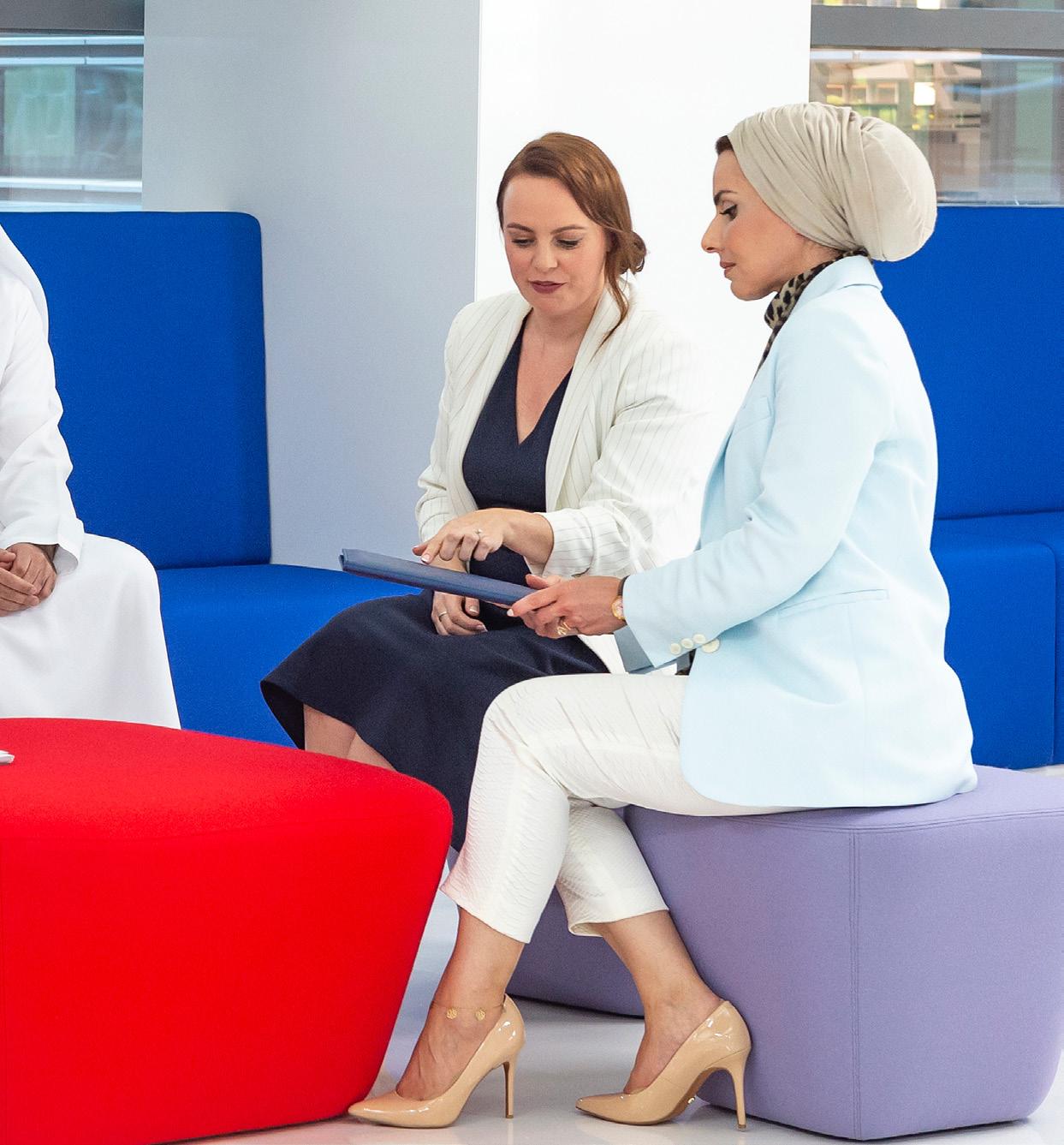
“Fairness, patience, and clear decisionmaking are crucial both on the football pitch and in procurement.
“No two days are the same in procurement. It is a routine job, but not a routine scenario.”
Few readers would argue with that statement, especially as the role of
procurement has evolved significantly in the decade that Mansour has been building his career and credentials. His rise has been even more impressive given he admits to never having heard the word ‘procurement’ until that chance discussion with an Etihad Airways’ manager.
Mansour explains that he learned quickly through hard work, following his mentor’s direction, and “never making the same mistake twice”.
He spent a couple of formative years in the Etihad Airways’ procurement team before moving to Masdar Institute (later merging with Khalifa University) in 2015 where he spent four years. He joined MBZUAI in 2020, commencing as Head of Procurement in August 2022.
Working at the world’s first graduate, research university dedicated to artificial intelligence (AI) presents its own unique challenges – not least because it was a startup pioneering high-level curriculum in computer science, computer vision, machine learning, natural language processing, and robotics.
Then there was the dreaded pandemic to contend with, too. But that did not
stop MBZUAI producing its first master’s graduates in December 2022 and again in June 2023. The Class of 2024 will see the university’s first Ph.D. students graduating.
MBZUAI was founded in 2019 and provides a purpose-built, high-tech, and eco-friendly campus. Currently, MBZUAI has 283 students from 41 countries. Its diversity makes it a unique and welcoming institution and benefits the work it undertakes.
From a procurement perspective, the task was even more significant given that MBZUAI funds every student via a full scholarship – covering course fees, accommodation, flights, and even providing a generous ‘stipend’ allowance.
“Being an AI university, our main suppliers are naturally in the IT field,” Mansour says.
“We started the IT infrastructure with Emircom, then we developed our High Performance Computing (HPC) data centre with Hewlett Packard Enterprise (HPE) and Alpha Data.”
Emircom and Alpha Data are both Abu Dhabi-based technology companies and Mansour says the university is keen to work with local, homegrown suppliers and partners where possible.
“Fairness, patience, and clear decision-making are crucial both on the football pitch and in procurement”
MANSOUR AL BLOOSHI HEAD OF PROCUREMENT, MBZUAI
MANSOUR AL BLOOSHI TITLE: HEAD OF PROCUREMENT COMPANY: MBZUAI
Mohamed bin Zayed University of Artificial Intelligence (MBZUAI) was established in 2019 as an open invitation to the world. Against a backdrop of global artificial intelligence (AI) talent shortages, the university is providing a worldleading pipeline of AI specialists to support the UAE’s innovation trajectory.

MBZUAI is supporting the UAE to find solutions to the world’s most pressing challenges with transformative research in areas such as healthcare, education, and climate.
According to CSRankings –MBZUAI ranks in the top 20 globally in AI, computer vision, machine learning, and natural language processing, ahead of many respected peer institutions.



However, there is also a greater focus on sustainability when it comes to commercial evaluation of suppliers.
“Sustainability is one of the major goals we are trying to achieve within the Abu Dhabi Government, not only the university,” Mansour says.
“This is a long-term goal, but today if I make even a small change then in 10 years that might make a difference, and we may reach our 2050 goal.”
One of the first sustainability initiatives instigated by Mansour was the removal of plastic water bottles. He then set about creating a sustainability policy for
procurement, setting out what suppliers need to do to meet MBZUAI’s requirements.
“We made sustainability worth between five and 10 marks for our evaluation of suppliers, so that’s around 20 percent of the commercial evaluation,” Mansour explains.
“From IT to kitchen supplies, we look for products that are recyclable, sustainable, and do not impact the environment. We need to make sure that God-given resources are protected.”
Less than 12 months old when Mansour started at MBZUAI, he soon discovered the procurement team was processing by hand because they were ‘between’ digital systems.
More than 50 faculty members have been appointed to date; 56 percent of whom come to Abu Dhabi from the world’s top 100 AI institutions

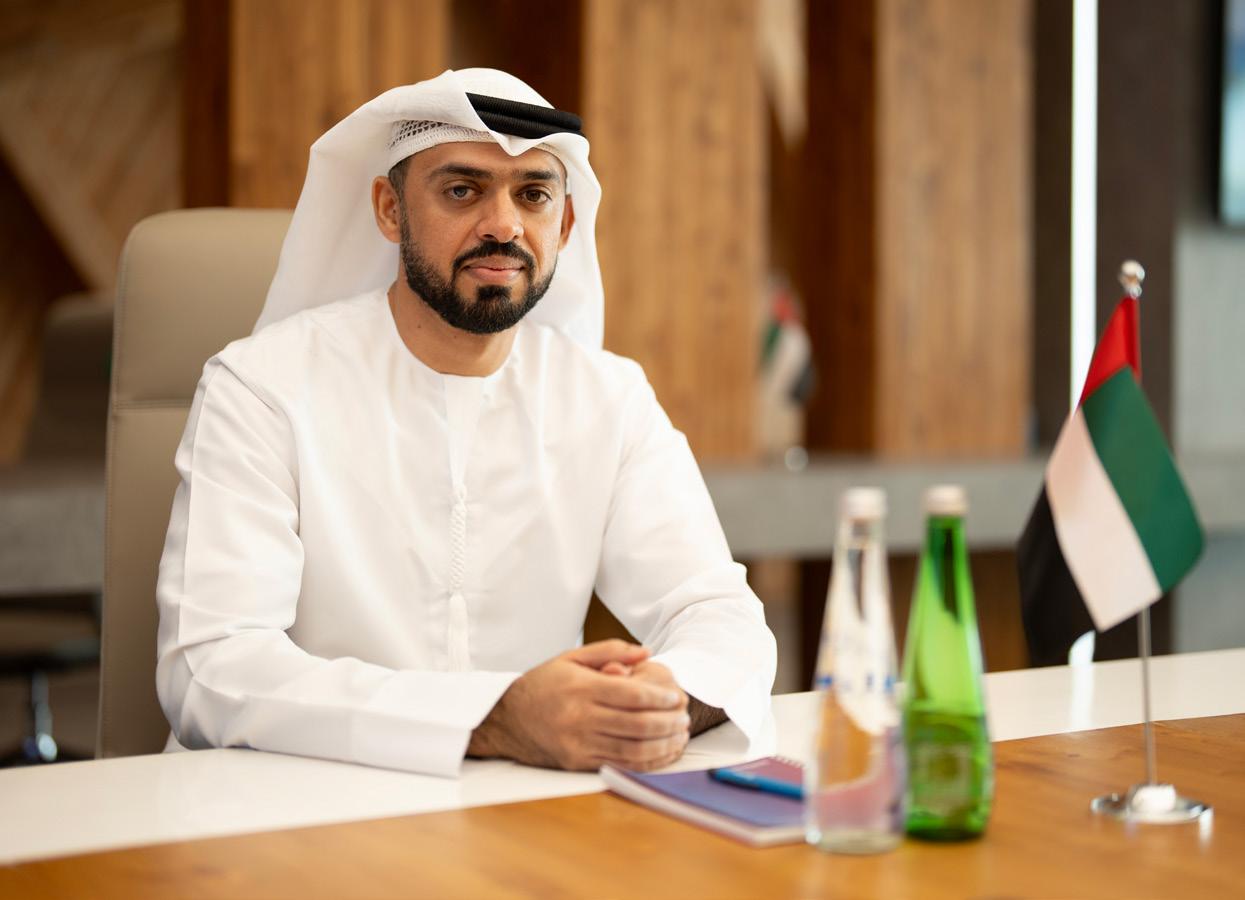

Mansour admits that the system does have some challenges, and he works around that by creating some bespoke systems and processes to make sure he stays on top of closing open POs especially, so that they do not have a negative impact on his annual budget.
Of course, challenges are all part of the fun when it comes to procurement, and this variety is what appeals to Mansour.

“No two days are the same in procurement,” he states. “It is a routine job, but not a routine scenario. Educating people about procurement, helping them understand procurement, makes me feel good.”
That is a good thing, as Mansour’s team is expanding and becoming
MANSOUR AL BLOOSHI HEAD OF PROCUREMENT, MBZUAI
“Sustainability is one of the major goals we are trying to achieve within the Abu Dhabi Government, not only the university”
more specialised. The procurement department continues to go from strength to strength with its procurement strategy in place. They are supported in simultaneously handling contracts, vendor
management and quality assurance. Mansour adds that it has taken a lot of effort and resources, but those investments will pay dividends as the procurement team delivers greater efficiencies.
As well as providing master’s and Ph.D. degrees for the brightest computer science minds, MBZUAI also runs regular executive and professional training programs for leaders in both government and the private sector.
These courses provide leaders and managers with knowledge about AI and
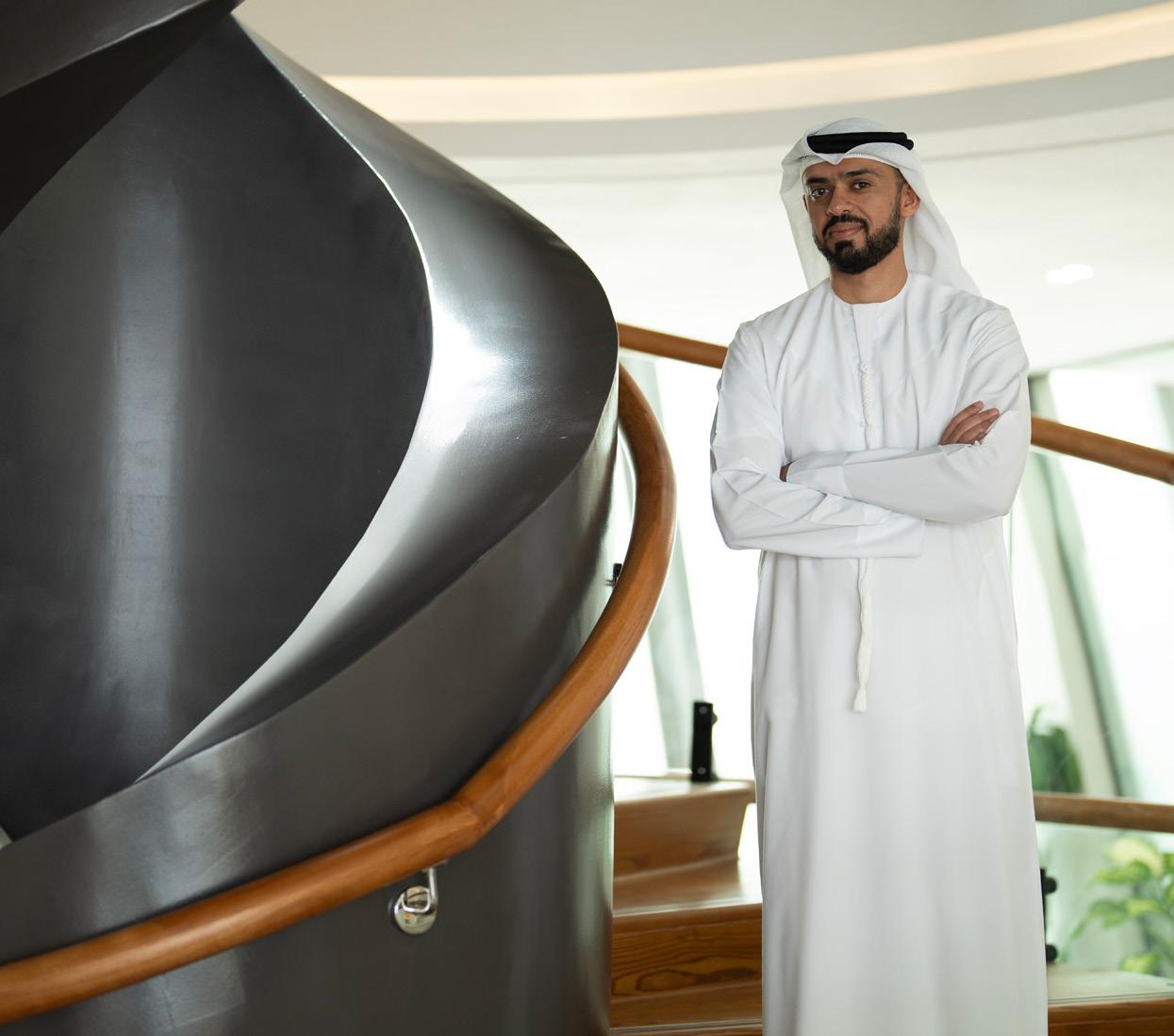
“No two days are the same in procurement. It is a routine job, but not a routine scenario”
MANSOUR AL BLOOSHI HEAD OF PROCUREMENT, MBZUAI
how it can be best used to positively impact business and society. The university’s oneof-a-kind Executive Program (MEP) has successfully trained three cohorts consisting of more than 120 UAE leaders in AI so they can begin implementation in their home organisations. Through their exposure to elite, global AI researchers and heads of industry, private and public sector leaders in the UAE are growing into a powerful AI ecosystem — an essential ingredient for long-term success with the technology.

MBZUAI believes that leadership’s buy-in towards implementing AI is a critical factor to successful digital transformation

and adoption in industries across the UAE and the world.
Mansour is excited to be working for one of the global leaders in AI and believes the institution’s future is bright.
“We have all the resources when it comes to talent. We have brilliant ideas,” he says proudly.
“I believe that the UAE can be central to the future of AI both in the region and the world. MBZUAI is the paradise of AI.”
As procurement operations work to deliver their sustainability strategies, the importance of transparency through every tier of the supply chain is critical
 WRITTEN BY: NEIL PERRY
WRITTEN BY: NEIL PERRY
Recent research in the Deloitte Global Chief Procurement Officer Survey 2023 showed a significant increase in the importance of enhancing ESG from the 7th most important enterprise priority in 2021 to the 2nd most important in 2023.

Achieving transparency specifically can be an elusive target, that is made easier by good relationships and intelligent use of technology, but how can a strategy be developed to make sure it delivers consistent and reliable results for both the business and the environment.
The key is reliable and well organised data, and remains the top obstacle to more effective procurement argues Alex Saric, Smart Procurement Expert at Ivalua. “Data is typically spread out in silos and of poor quality, and organisations lack visibility into who their immediate suppliers purchase from,” says Saric “This is especially problematic when it comes to improving sustainability. Without a clear picture into supplier emissions, it’s impossible for organisations to accurately measure, disclose and optimally reduce their environmental impact.”
What are the main downfalls of disconnected systems that don’t communicate seamlessly with each other? Pierre Laprée, Chief Product Officer at SpendHQ, explains that they see procurement teams grabbling with data management at scale and distilling that data into something they can leverage for business gains.
“Procurement teams often find themselves relying on manual intervention
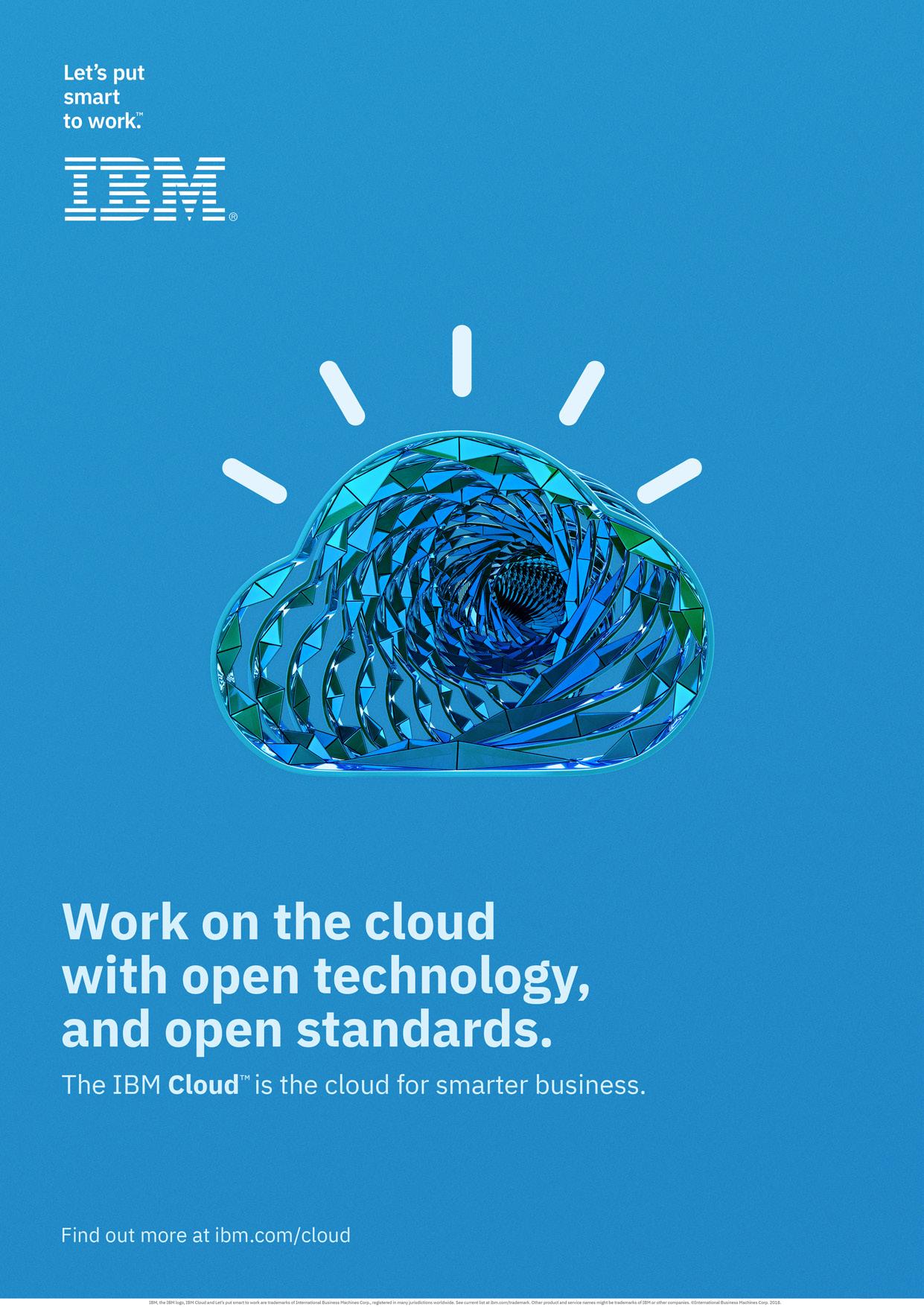
and using Excel files to build a holistic view of the situation and make important decisions,” he says. “This reliance on manual processes not only consumes valuable time and resources but also increases the risk of errors and outdated information.”
Kapila Mehta, VP of Sustainability in Schneider Electric’s Power Product division expands on this, emphasising challenges like receiving enough data beyond tier one suppliers, and knowing that engagement and collaboration with suppliers is essential in achieving a sustainable procurement framework.
A lack of standardised policies between different regions is also a key problem. “Current policies are inadequate and differ from one zone to another,” says Mehta.

“Trust that our operations and data are accurate will allow us to steer clear of greenwashing claims and be seen as a trusted partner in the industry”
KAPILA MEHTA VP OF SUSTAINABILITY, POWER PRODUCT DIVISION, SCHNEIDER ELECTRIC
“The challenge is suppliers may be mapping their required data but policy in that region is not asking for it; or the inverse might apply, where specific regions demand data that companies aren’t equipped to provide.”
Achieving transparency through a supply chain is a challenging task, but some organisations may be making it harder for themselves by making mistakes in the implementation of their sustainability efforts.

“Instead of assuming suppliers will adhere to requests, oftentimes, there is necessary handholding involved,” explains Kapila Mehta from Schneider Electric. “For example, are suppliers adequately mapping Tier 2, 3 and 4 and sharing their own suppliers?”
Alex Saric from Ivalua continues that a piecemeal approach can ultimately lead to quality and access issues. “They may purchase one solution where they track risk, another for overall ESG, another specifically for carbon emissions, another for managing supplier contracts, and so on. This leads
“Transparency will free you to understand what you are doing, and by extension, have the tools and data to monitor what you are doing”
PIERRE LAPRÉE CHIEF PRODUCT OFFICER, SPENDHQ
TITLE: CHIEF PRODUCT OFFICER
COMPANY: SPENDHQ
LOCATION: ATLANTA, GEORGIA
Pierre Laprée is the Chief Product Officer at strategic Procurement Platform SpendHQ. He joined with the company’s July 2022 acquisition of Per Angusta which he founded in 2012 and served as its CEO. Pierre served as Procurement Director and right hand of the global CPO at The Adecco Group. He is a frequent speaker and author on procurement and finance.

to more and more duplicate records and an inability to have a 360 degree view of all information related to a supplier.”
Laprée refers to this all as the ‘big data problem’ where the spend, supplier and enterprise data suffer from fragmentation, disaggregation, and lack of connectivity from a central, reliable, source of truth, such as a spend analysis solution.
A patchwork of procurement solutions are put in place to try and manage the problem, but this can have the opposite effect. “We have observed firsthand that many procurement teams face difficulties in fully utilising the available data,” he says. “The data remains fragmented, messy and requires extensive manual intervention to bring procurement data, especially spend data, into a usable state.”

TITLE: SMART PROCUREMENT EXPERT
COMPANY: IVALUA
LOCATION: FAIR HAVEN, NEW JERSEY
Alex has spent over 15 years of his career evangelising spend management, shaping its evolution, and working closely with hundreds of customers to support their digital transformation journeys. At Alex leads the overall global marketing strategy and thought leadership programs.

The benefits and avoidance of greenwashing ‘Greenwashing’ is always a recurring fear in any organisation’s sustainability efforts, but by making sure you have the data to backup strategies like transparency can protect an organisation from such claims and prove that the policy is having a positive impact on the environment.
Having improved transparency in procurement and supply chain operations allows companies to make smarter decisions on selecting which suppliers to partner with, and ensure they fit in with your wider sustainability strategy.

“As the demand for sustainability grows, organisations will have higher chances of passing stringent criteria of vendor selection, which could lead to higher growth,”
says Mehta. “Trust that our operations and data are accurate will allow us to steer clear of greenwashing claims and be seen as a trusted partner in the industry.”
Saric agrees, emphasising how it can deliver tangible business benefits. “Transparency does not only help businesses ensure they are on track to meet sustainability targets, it also provides a strategic benefit over competitors, with greener firms able to grow their market share.”
Laprée expands on this further, as the quality of the data you carry can make your business an even better proposition for
potential customers and partnerships. “The better and more refined your data, and the more that your stakeholders trust your data, the more likely they are to regard you as a transparent and trustworthy business partner – and a preferred supplier or vendor in your own right,” he says.
There is plenty of advice available to help businesses improve the transparency of their sustainability operations, but much of it follows two themes of making sure the business is fit for purpose in terms of having processes and technology in place
to handle the required data, and having strong communications with their suppliers and partners.

This may lead to difficult decisions with partners who aren’t hitting the required reporting standards, says Saric.
“Firms must also ensure they are continuously communicating with and assessing suppliers on their environmental impact. This will help evaluate their emissions progress across the supply chain, while also driving continuous improvement by either collaborating with suppliers to reduce emissions or swapping out suppliers with substandard performance.”

ALEX SARIC SMART PROCUREMENT EXPERT, IVALUA
“Transparency does not only help businesses ensure they are on track to meet sustainability targets, it also provides a strategic benefit over competitors”
TITLE: VP OF SUSTAINABILITY, POWER PRODUCT DIVISION
COMPANY: SCHNEIDER ELECTRIC

LOCATION:BENGALURU, KARNATAKA, INDIA
Kapila Mehta is an experienced industrial product and system specialist with a demonstrated history of working in new product development and launches with end-to-end experience. She is skilled in cross-functional engineering management, team building, project management, leadership, supply chain, manufacturing, strategy, global strategy and integration functions.

Mehta expands further on that, saying that transformation can take time, but stakeholder alignment and strategy is crucial.
“A framework that can help organisations improve transparency and adopt more sustainable practices is ‘Strategise, Digitise, and Decabonise’. This starts from setting a benchmark of current practices, energy usage and emissions, so you can then introduce the right digital tools to help with managing processes, and ultimately reduce operational emissions.“
As in so many areas of progressive businesses, the power and potential of AI will play a significant role delivering visibility
of environmental impact, as data is brought together from all tiers of the supply chain.


“While AI technology is advancing rapidly and has the potential to bring significant benefits, the quality of output remains highly dependent on input data quality,” says Saric. “Procurement leaders need a solid data foundation, which requires significant investments in technology, data infrastructure, and talent.”
With the public and customers becoming increasingly engaged and inquisitive about environmental credentials, the value of transparency is becoming ever more apparent, as more data becomes available.
“Something that is already picking up is the mandated disclosure of environmental data.,” says Mehta. “Reporting data on CO2
emissions and environmental risk will become mandatory in more countries, like how the food industry now requires restaurants to divulge the calories of food. Increasing policy and legal requirements will help to hold suppliers accountable for their ESG performance.”
The ultimate benefits of achieving transparency through the procurement process are two-fold for both the environment, and for the business as a whole if performed correctly. As Laprée says, it is the only way to get a proper understanding of the value chain.
“A French philosopher once said that you can only express properly what you understand properly,” says Laprée. “Transparency will free you to understand what you are doing, and by extension, have the tools and data to monitor what you are doing.”

 WRITTEN BY: TOM SWALLOW
WRITTEN BY: TOM SWALLOW
PRODUCED
STUART IRVING
BY:
Take thousands of employees, produce hundreds of beer brands, and then distribute all across the world and you’ve got yourself a very complex operation that exceeds US$55bn in revenue with the need for an intricately built supply chain. This is where Anheuser-Busch (AB) InBev has excelled over more than a century – becoming the big-name business that it is today – thanks to its ability to manage a global team and expand in line with current trends and demands within the industry.

With this growth comes expansion and AB InBev acquired South African Breweries (SAB) Ltd in 2016, a major step towards sharing its great products with more consumers across the country – serving more than 55 million of its population. Particularly in the current commercial landscape, procurement has come to the fore as a crucial component of expansion and ensuring compliance to environmental, social, and governance (ESG) throughout the supply chain.
To understand the important role of procurement in operations at AB InBev, we look to the Southeastern region of Africa, where the company boasts a great influence on Uganda, Tanzania, Zambia, and other countries through quality procurement processes as the company looks to localise its sourcing.

With breweries in 11 countries on the African continent and a number of local agricultural programmes across half of them, the company is very much driven towards localisation to provide products to the African market. While providing more opportunities to the local farmers in this area, procurement has a role to play in developing the business for the modern industry.
“Procurement within AB InBev has evolved immensely,” says Jacques Els, Procurement & Sustainability Director: BU Southeast Africa. “As the company has modernised, procurement started to evolve within the business purely because of the value procurement can generate for the bottom line.

“We know industries, specifically in Africa, are struggling. Economies are not growing
to the level we would like them to, and therefore the bottom line becomes more and more critical.”
Now that procurement has ‘a seat at the table’ within AB InBev, Els believes that new levels of value will be reached now the department has become more influential in the business’ growth. Els really emphasises the importance of procurement as a function leading the business in a number of areas, including social aspects of enterprise as well as profitability for the overall African segment.
“Our procurement function has been elevated within the business and it’s become even more apparent since we started thinking about the principle of supply chain, which is essentially production, logistics, and the procurement organisations all under one umbrella.
TITLE: PROCUREMENT & SUSTAINABILITY
DIRECTOR: BU SOUTHEAST AFRICA
COMPANY: ABINBEV
Jacques Els, Procurement & Sustainability Director for ABInbev Africa’s South- East Africa Business Unit has been part of the Beer giant’s Procurement function for eight years. Having held various positions within the Procurement function in Africa Zone, from Operational Implementation to Sustainable Development of Sourcing and Security of supply strategies.
Prior to his career at ABInbev, he has held Consultancy and Operational Supply chain roles within the Power generation and Logistics industries in Africa.
The core of Jacques responsibilities over the past eight years has been the consistent drive to develop supply chain maturity, localisation of strategic industries and driving Sustainability initiatives to support business results. His experience on the African continent, including relocation to Tanzania for 3 years has enabled him to deliver consistent results to the bottom line, whilst continuing to grow a robust supply chain within Africa.


Water scarcity poses a huge global challenge to brewers. In one of the most water intensive sectors, it’s crucial to ensure that every drop of this increasingly precious resource is maximized.
Water management impacts every operational aspect, including a brewer’s reputation with customers, the communities in which they operate, and future investment. Inefficient water use is increasingly viewed as unjustifiable, and a barrier to the business resilience necessary for success in a world of increasing water scarcity.
Diversey manage hygiene and water quality as a complete system. Through an ongoing consultative partnership delivering innovative programs and technologies, we apply efficient reuse, recycling, and wastewater treatment, while adding value that drives differentiation.
Our systematic total approach to water management begins by creating a complete picture of water use. AquaCheck uses three clear steps, where data of historical water patterns is collected and analysed to identify areas for monitoring. Priorities are determined and the scale of opportunity assessed for water savings, and in reducing risks from scarcity and rising costs.
As a responsible brewer, ABInBev makes water conservation its highest priority, while maintaining the vital balance between remaining competitive and reaching its sustainability and ESG goals. In partnership, Diversey’s engineering capabilities and treatment technologies were tasked with defining a broad overview of water use.
This analysis was then applied in a successful recycling and water-saving project for the bottlewasher operation in one of the company’s South African facilities. Final Rinse water is recycled to the pre-rinsestep by design to help pre-rinse effectiveness. And then the excess water that goes to drain after pre-rinse is collected, treated, and disinfected to a standard suitable for use in crate washing and floor cleaning. And as per requirement, recycled water cannot be used in areas where it can be in contact with the product.
Working together, Diversey’s tailored balance of knowledge, expertise, advanced chemistry, and equipment technology achieved water savings of 30k m3 per year to significantly increase efficiency and support ABInBev’s sustainability aims.
Further resource savings have been realised by implementing solutions from Diversey’s KBS service portfolio, including Divos X5 membrane cleaning, delivering reduction water, raw caustic and formulated chemical consumption, while increasing beer throughput and process efficiency.
Discover more about how Diversey can help you reach your water saving goals:

“This supports the understanding that the supply chain can deliver value within your business.”

And for AB InBev, the supply chain is everything. From the sourcing of raw materials like wheat and barley from a variety of farmers, to retaining production efficiency and product quality across new markets and distributing beer to countries across the continent. Let’s also not forget the sustainability requirements within the supply chain, which adds a new layer of complexity to the procurement role – sourcing goods provided using sustainable energy.
Commercial perspective: Retaining necessary product quality of global products
The commercial value for AB InBev comes from several factors in the supply chain. As the company operates on a localised basis, product quality and cost optimisation are crucial outcomes the business strives for when dealing with multiple breweries that produce the same great products.
The procurement function is responsible for ensuring that not only the products meet the company’s legacy – high-quality – standards, but are produced in a costeffective, equitable way.
“When you look at industrialisation in Africa’s markets, procurement is critical. It plays a critical role in developing suppliers to deliver at the right quality; the consistency from suppliers on a multinational level,” says Els.
“Localising suppliers so that we’re not so reliant on global supply chains – ocean freight from Chinese, European or American ports – has become a huge value-add for us, because we are able as a procurement team to do that faster and quicker than most of our competitors.”
What Els explains here is that, also due to the global events of the past few years, localisation has been a natural shift for the business and procurement is at the heart of achieving this to create a more resilient supply network to overcome such events in the future. This is crucial for commercial longevity, but, particularly in Africa, a staple procedure that will bring more local businesses into the fold, and effectively provide support to small and medium businesses in a country of a developing economy.
Community perspective: Developing local business through procurement and commerce
Sustainability being the hot topic across the globe, AB InBev embraces this with open arms across all areas of its business and all factors related to operations. These of course include sourcing sustainable energy and supporting the communities in which it operates.
Bringing on board local businesses in Africa as the suppliers of AB InBev products across the continent creates a full cycle of development and reward both commercially and socially.
One of the main functions of procurement is bringing in small vendors and aligning them with its global standards, which, according to Els, requires a phased approach to avoid mistakes along the way.

“You grow local businesses, you develop the area they operate in, and you deliver more quality from those businesses”
630 Unique beer brands
175 Breweries
63% Of revenue from digital

As the company’s commitment to ESG and the UNSDGs stands, the success of farmers in Africa is within its best interests.
“The mistake made in the past is to try and go all-in at once,” says Els. “It’s about developing your local suppliers while maintaining the relationship with your international supply. We ensure that standards, training, quality, health and safety are top of mind before even talking about increased volumes, pricing, quality, and begin by making sure operations are aligned with the attributes we expect from any business globally.”
Not only does this strategy help to build resilience across the business, but allows AB InBev to make its mark, by providing suppliers with new markets and better ways of working.
“This is how we create value for the communities in which we operate,” says Els. “You grow local businesses, you develop the area they operate in, and you deliver more quality from those businesses that can supply others outside of AB InBev.”
In creating this value for Africa’s communities, Els also sees how localisation forms a breeding ground for new and innovative ways of working, thanks to its diverse pool of suppliers.

“We had to be the catalyst to prove to the business what is available out there with an entirely interlinked supply chain,” says Els. He also reiterates that procurement is not a supporting function, as he explains “as soon as this started happening, little by little we could see the mindset shift.”
Embedding the procurement team with suppliers across the countries seems to have empowered AB InBev to take more steps towards more sustainable methods of working. By getting closer to its suppliers, the South African team learned very
quickly what the pain points were for small companies looking to develop more responsibly.
“As soon as the procurement team started taking over sustainability as part of our business initiatives within our supply chain – renewable energy, water usage, climate change, etc – suddenly everyone realised that what we’ve missed is that additional supply chain value that procurement has access to,” says Els.
“Globally procurement developed, but within the group it was us as a team really embedding our value in the business.”
Regulatory perspective:
The regulation hurdle of localisation Returning the focus to operations, the hurdles overcome by the procurement team at AB InBev are what make it a crucial department for the team to embrace globally. Looking at the company’s African expansion, regulation is a key factor to contend with when trading across multiple countries.

As a commercial endeavour with economic benefits, Els prides his team’s efforts to accelerate legislation to improve trade across Africa, which consists of duties and taxes that hinder progress of executing its processes in this area of the supply chain.
“You still find challenges between different African countries that do affect efforts to efficiently speed up and execute some of these localisation initiatives and inter-trading initiatives,” says Els.
“Also, when you look at the sustainability side, when it comes to recycling plastics and the way the governments interact with businesses, it sometimes feels very reactive. We do find ourselves sometimes having to react very quickly to bans on plastics; legislation changes that come across overnight.”
Overcoming myriad challenges from the project inception to execution is where Els’
JACQUES ELS PROCUREMENT AND SUSTAINABILITY DIRECTOR: BU SOUTHEAST AFRICA, AB INBEV“Our procurement function has been elevated within the business and it’s become even more apparent”
journey with the company has taken him – since working with SABMiller in 2015 to his position at AB InBev. Now he sees the company operating with a network of 11,000 small, older farms across his home continent, which is testament to the company’s procurement function and a natural move as the supply chain becomes an important focus from global success.
As part of the team that catalysed major changes there, Els continues to support these endeavours and will allow further relationship building, sustainability implementation, and commercial growth for his company and those trading with the business.
Through further partnerships, procurement continues to duplicate these achievements across a number of countries, bringing them into an ever-growing partner network. Moving forward with its vendors, AB InBev can use its platform to facilitate further industry shifts and will be a driving force in reducing supply chain impacts on the planet and enhancing the lives of those affiliated with beer business.








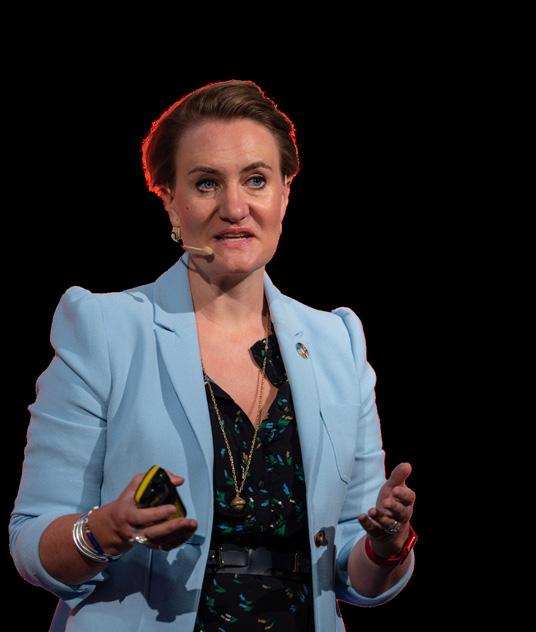
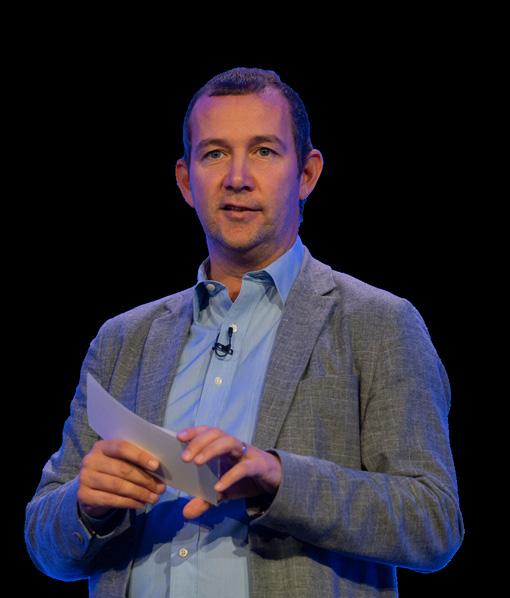

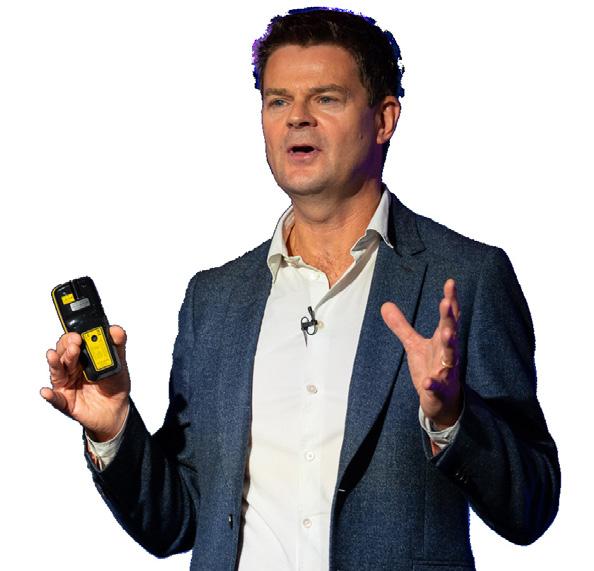












8 - 9 November 2023
QEII Centre, London
SPONSORSHIPS GET YOUR PASS